- Best Sellers
- Vintage chart
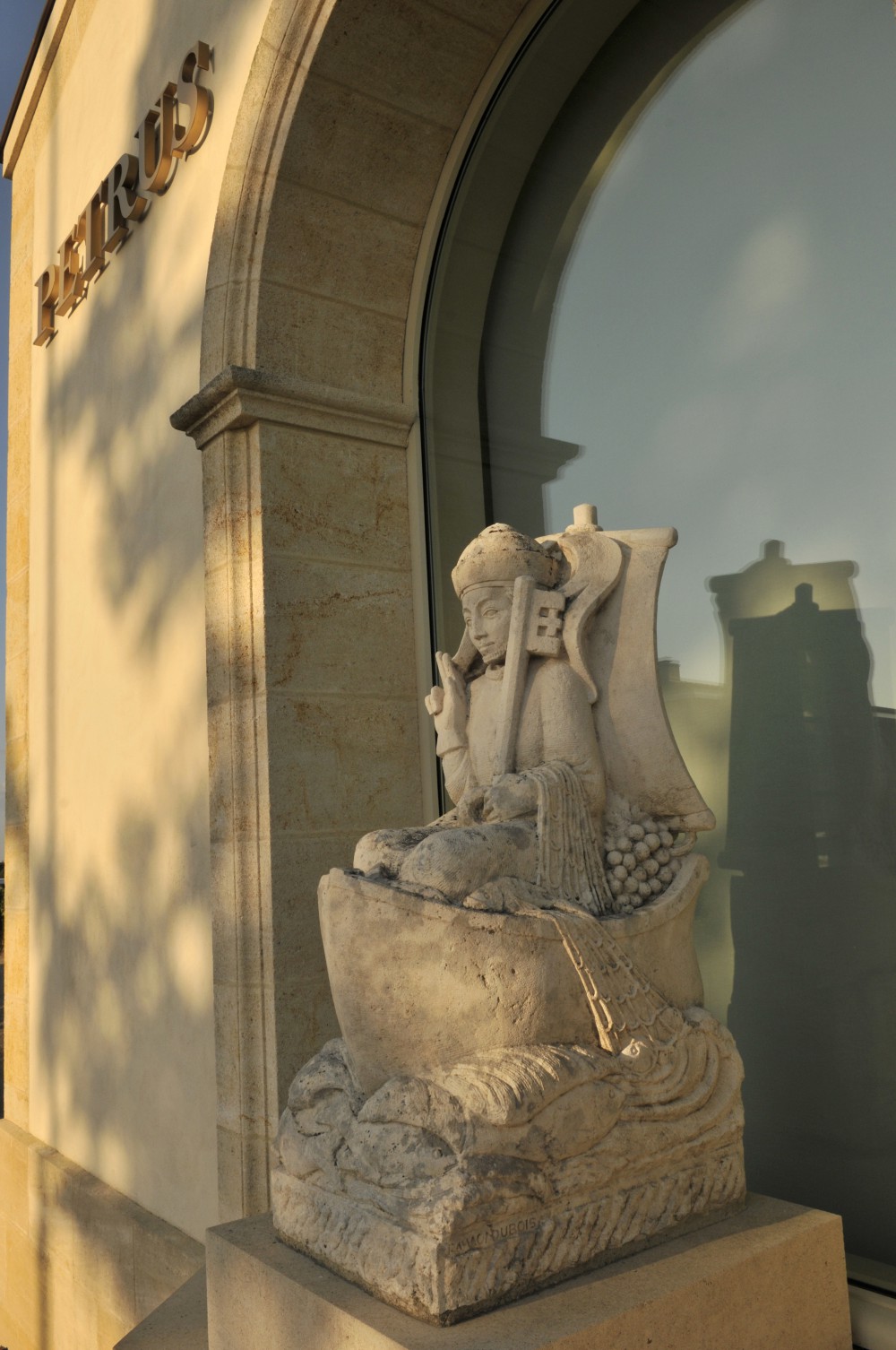

10 Things to know about Petrus
There is something mythical about the name Pétrus : a wine that every wine lover should have drunk at least once in their life. The wine was served at Queen Elizabeth's wedding in 1947 and the Kennedies were also known to be fans. But what is it exactly that makes this wine so special? In this blog you will read everything you always wanted to know about this top Merlot from the right bank. If you want to see which vintages of Pétrus we have in stock, please click here .
1. Once and for all: is it Pétrus or Château Pétrus?
Well, fact is that the word "château" never appeared on the bottle. The label only mentions "Pétrus Pomerol". People who start searching for an actual castle in Pomerol can search for a very long time: there is no castle at all. Yet we often talk about "Château Pétrus". This has to do with the meaning of the word château in Bordeaux: "a wine-producing company including all its vineyards, cellars and the winery". And that could be anything from a castle to a converted garage. The wine company Château Pétrus has a fairly modest building in Pomerol , especially if you compare it to the chic castles of its famous brothers on the left bank.
2. Can I visit Château Pétrus?
Arranging an appointment at Pétrus will probably be hard. Pétrus hostes very few guests and only base on personal recommendation. It is not entirely clear whose recommendation that would be exactly, but you can count on it that this must be an influential person in the wine world. If you don't have such contacts, you will have to console yourself with this virtual visit from wine writer James Suckling on Youtube .
3. Is Pétrus a Grand Cru?
No. Pétrus is one of the most expensive wines in the world and is mentioned in the same breath with top châteaux in the Médoc such as Mouton Rotschild, Margaux and Latour, but unlike the latter, Pétrus does not have a premier grand cru status. In the classification of Bordeaux wines of 1855, no Pomerol wines are listed at all. Officially Pétrus is therefore a "normal" AOC Pomerol wine.
4. Is Pétrus the best wine in the world?
Everyone must determine for themselves whether that is the case. ( James Suckling thinks it is! ) But no one will disagree when we say that Pétrus belongs to the absolute top. It is a complex wine, a real powerhouse with an insane amount of fruit. The quality of Pétrus is the result of a million little things, that make Pétrus the wine it is. Of course, we cannot go into every detail here, but one point that is certainly important is the location of the vineyards. The 11 hectares of vineyards are located at the highest point of Pomerol, a hill called la Boutonnière Pétrus . The soil consists of blue clay, which is rich in iron and can only be found in this specific place. Clay has the ability of being able to retain water well, so the roots always have access to a water supply in the soil. Also contributing to the success is the constant pursuit of perfection in both the vineyard and the cellar. A good example is the story of the rainy harvest of 1987, when helicopters were used to blow dry the grapes before they were picked.
5. Why is Pétrus so expensive?
Indeed, Pétrus is not a cheap wine. The price differs per vintage, but you will not find a bottle of Pétrus under €2000. And for the very best years, the price can go up to €5000. This of course has everything to do with the quality described above, the mythical status and the limited availability of the wine. About 25.000 to 30.000 bottles of Pétrus are brought onto the market every year. That may seem like quite a few bottles, but of course they still have to be divided among wine lovers all over the world...
6. Where can I buy Pétrus?
You came to the right place! Best of Wines has a very extensive range of Pétrus (various vintages) in stock , including the excellent - 100 Parker points - 2009 and 2015 vintages.
7. What are the best Pétrus vintages?
Legendary Pétrus vintages are 1928, 1929, 1945, 1947, 1950, 1959, 1961, 1970, 1989, 1990, 2000, 2005, 2009, 2010, 2015, 2016, 2018, 2020. All other years are good to very good. In really bad years, like 1956, 1965 and 1991, no Pétrus was made.
8. How can I know for sure my bottle of Pétrus is authentic?
Anyone who has seen the documentary Sour Grapes will be extra alert when it comes to buying old wines. So, how can you be sure that you are not dealing with a so-called fake bottle? We can be very clear about the answer to that question: buy your bottle from a reliable source. Best of Wines has a whole team of specialists who know exactly what to look for when assessing the authenticity of an older bottle. And even with younger vintages, there are visible and invisible ways in which the wine is protected. Therefore, we can guarantee the authenticity of all the bottles we sell.
9. I have a bottle of Pétrus in my cellar, when should I drink it?
Pétrus is known for its great aging potential. Basically, a 15 year old Pétrus is still a baby. And good vintages only reache their peak after 20 to 45 years. Finding it too hard to wait and no moral problems with the "baby murder" of opening a young Pétrus? The 2006 and 2014 are vintages that relatively drink well at this point. In that case, we do recommend decanting the wine for quite a few hours in advance.
10. What happens to "declassified" Pétrus?
Unlike most châteaux in Bordeaux, Pétrus does not have a second wine. The grapes that are rejected for Pétrus - and sometimes that will be whole plots of vineyards (!) - are sold and disappear in other AOC Pomerol wines. Which Pomerol wines, you ask? Well, that's one of Bordeaux's best kept secrets!
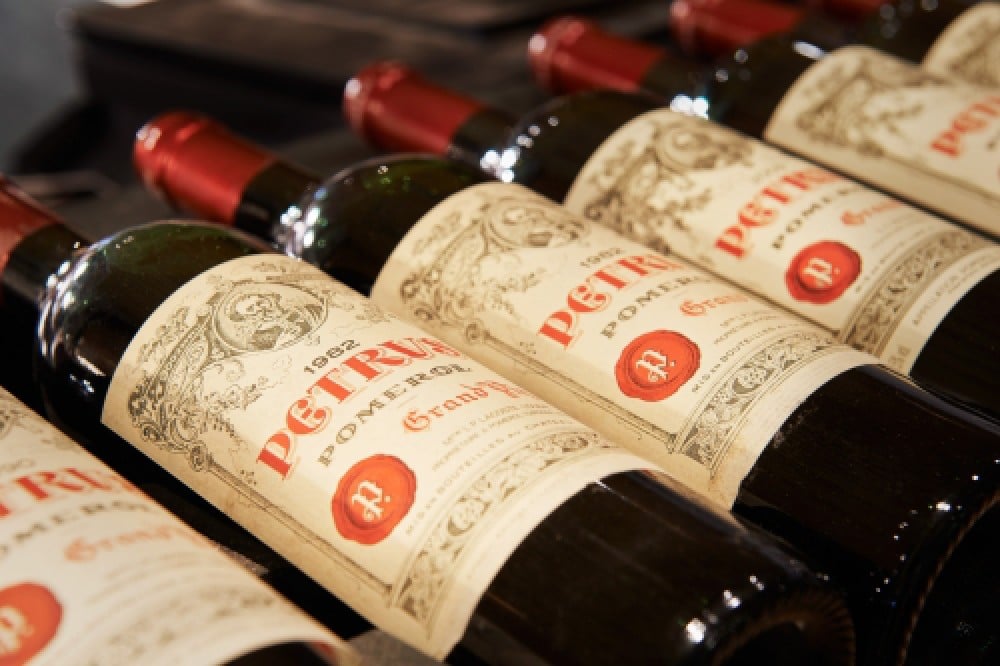
The difference between the Bordeaux Left and Right Bank
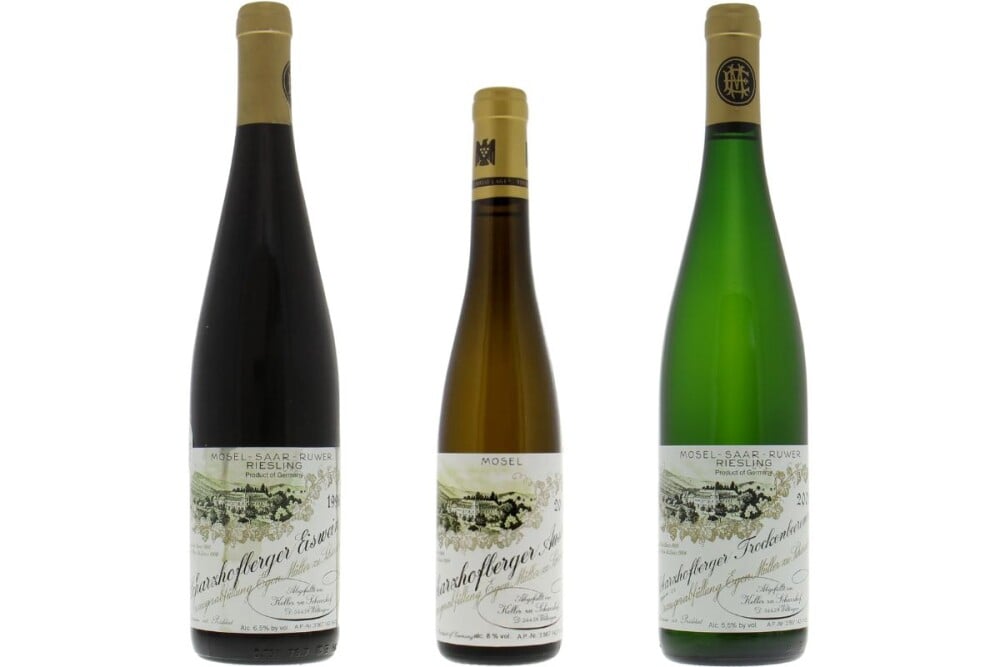
10 things you should know about Egon Müller
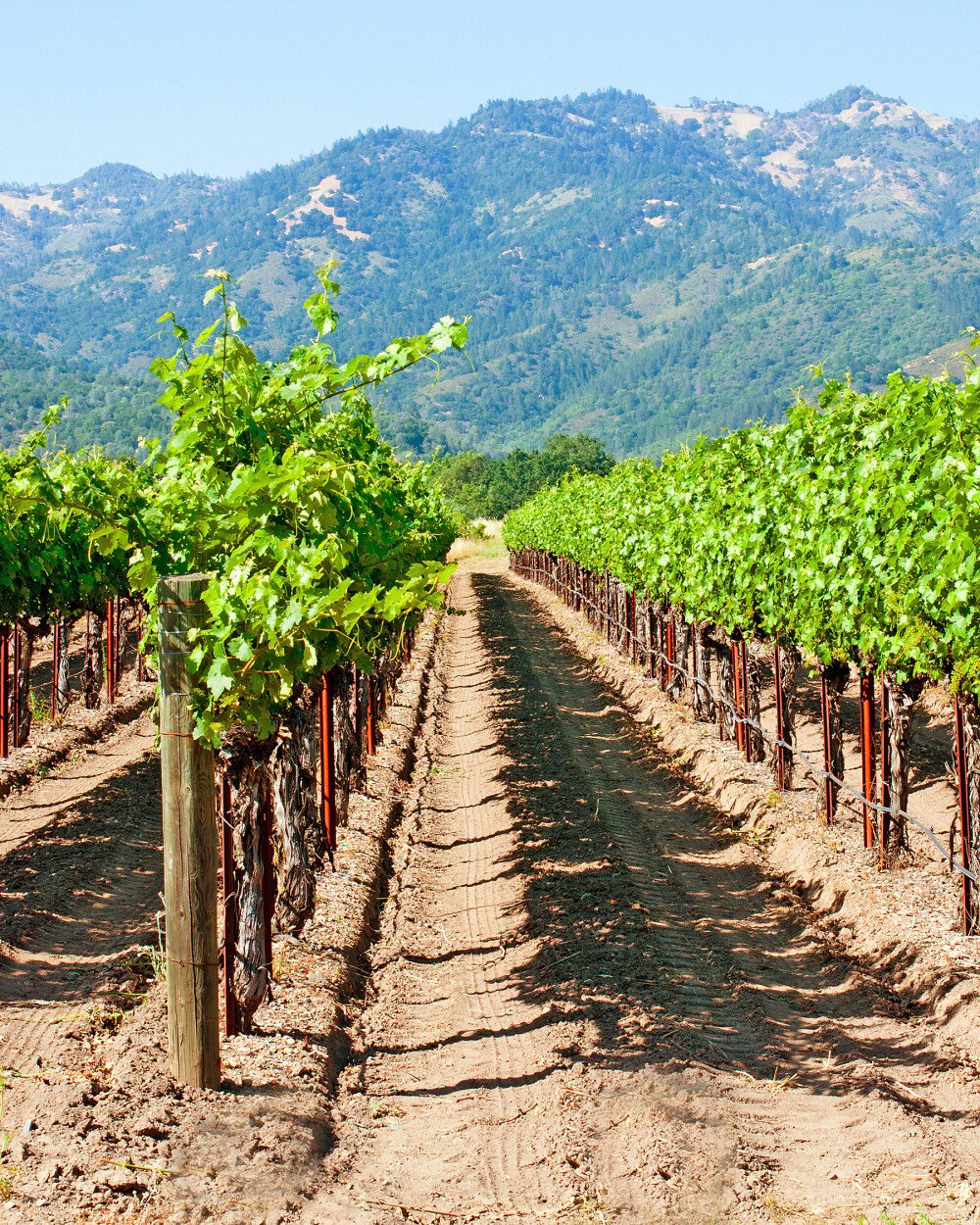
Napa Valley: The history of a prestigious wine region

Château Pétrus

Release Price
Drink window.
Pétrus is extraordinarily rich, powerful and concentrated, often with characteristics of chocolates, truffles, Asian spices and ultra-ripe, creamy, black fruits. Petrus is usually approachable after a decade or so in bottle, but the wines from the very greatest years will continue improving for many more years.
Growing Conditions
The 11.4 hectare vineyard is located on a plateau on the highest part of Pomerol in the far east of the appellation. The topsoil and the subsoil at Pétrus is almost all clay (in neigbouring properties the soil is a mixture of gravel-sand or clay-sand) and Merlot flourishes in this soil. Pétrus' vineyard is planted with 95% Merlot. The vines are unusually old and are only replanted after they reach 70 years of age.
The grapes are hand harvested only in the afternoon, when the morning dew has evaporated, so as not to risk even the slightest dilution of quality.
The grapes are fermented in cement vats.
The wine is aged in 100% new oak barrels for 22-28 months. It is bottled unfiltered.
More from this Producer

Little known 50 years ago, this château has seen the rise of a myth about the uniqueness of its wine. The wine’s inimitability is due to many factors including an exceptional terroir. The vineyard is 40 meters above sea level, the highest point of the appellation, and has a layer of heavy clay soil and an iron subsoil. These are ideal conditions for the expression of the Merlot grape. With such a special terroir, the approach in the vineyard and cellar is traditional and respectful.
- How it Works How to Buy How to Select How to Sell Our Service You are in Safe Hands Talk to an Expert
- Start Investing Live Market Collections En Primeur
- Wine Academy Wine Investment Guide Wine Producer Guide Blog Portfolio Performance
- Company About Us Press Testimonials
- Support FAQ Contact Us
The Best Wines of Chateau Pétrus
As iconic wines go, Petrus is undoubtedly one of, if not the, most well-known in the world. Today its wines are the most expensive in Bordeaux, yet its popularity just continues to rise. So what is it that makes Petrus such an iconic wine?
When Victor Hugo said that “God made only water, but man made wine”, he didn’t mean just any wine. He meant Chateau Petrus, the sexiest, glossiest, most celebrated wine of the 20 th century. A household name in more than just one household, Petrus has garnered legendary status due to its superiority and, well, yes, its expense. Hands down, it is the world’s most impressive wine, the famous red type on the label speaking volumes before the bottle is even opened. If you want to make a splash, Petrus it is.
An introduction to Chateau Pétrus
Yet it wasn’t always this way. Petrus is one of the oldest estates in Pomerol (yet one of the youngest in Medoc), with records going back to the mid-1750s. There is a certain amount of archive chatter that dates back even further – to Roman times no less – that states that the vines grew on the Right Bank plateau of “stones and rock”, aka Petrus.
A brief history of Chateau Pétrus
Chateau Petrus became “Chateau Petrus” when Jacques Meyraud bought the vineyard and set about making it one of the best in Bordeaux.
From 1770 Chateau Petrus was owned and operated for over 100 years by Antoine Arnaud, who laid the foundations for the wine’s stellar reputation it enjoys today. By 1850, despite the Revolution and, latterly, phylloxera, it was considered the third-best wine in Pomerol. However, the estate’s real time to shine was when Jean-Pierre Moueix took over the production and distribution of the wine. Under Moueix’s steerage, the potential quality that Petrus had always shown became a reality.
Moueix became the owner of the estate in 1969 and kept it as a family business until 2015, when he sold a 20% stake to wealthy Colombian businessman Alejandro Santo Domingo. Domingo reputedly paid €200 million for his share, which values the winery at €1 billion.
Learn more about Chateau Petrus’ history in our detailed Chateau Petrus wine guide .
Chateau Pétrus: Vineyard and viticulture
So, what gives Petrus its unbeatable star-studded status? One word. Subsoil. Blue clay subsoil, if you really want to be exact.
Petrus’ clay subsoils are over 40 million years old, yet the thick gravel that covers it is “only” a million years old. Layered over that is dark clay topsoil that is between 60-80 cm thick. These layers create three very definite strata, forcing the roots of the vines to grow sideways (rather than down) as they cannot penetrate the hard layer of dense, deep blue clay. However, when it rains, water remains on the top layer of subsoil, feeding the vines with moisture all year round, including the hot summer months.
This topographical oddity is unique to the little (11.5-hectare) vineyard. The result is a wine with one of the highest levels of tannins in Bordeaux (and the highest in Pomerol) yet remains one of the softest in texture. While neighbouring vineyards have a portion of the famous blue clay subsoil, Petrus is the only estate that can claim it in its entirety.
Chateau Pétrus winemaking process
Understandably, harvesting and winemaking are taken very, very seriously at Chateau Petrus.
In the vineyards, they do not harvest green, preferring to clip the bunches to reduce the yields. Furthermore, the estate was one of the first vineyards to abandon the use of chemical fertilizers, preferring instead to plant weeds to help dry out the soil during the winter months. To make sure that absolutely no nutrients are lost, the same weeds are then repurposed and ploughed into the soil.
The harvesting is treated with extreme care. The grapes are hand-picked one at a time, so the yields are tiny. Curiously, while many other vineyards pick the grapes early in the morning when the temperature is cool, at Petrus, they wait until midday when any moisture has been evaporated from the grapes before picking. The fruit is always destemmed.
The fermentation takes place in 12 temperature-controlled concrete tanks, which means each parcel of land vinifies separately. When complete, the wines from the different vineyard plots are blended and then aged for 22-28 months in primarily new French oak barrels.
Why is Chateau Pétrus so expensive?
Yes, Petrus is expensive. It’s the sixth most expensive wine in the world, generally retailing for at least €4,000 a bottle, sometimes far, far more depending on the vintage. Is the price justified? Well, maybe. Nine vintages have been rated 100/100 by Robert Parker, the American wine advocate whose influence can make or break a producer.
Annual production is low, between 15,000-30,000 bottles (remember the vineyard is only 11.8 hectares, very small by Bordeaux standards). Furthermore, the chateau keeps distribution to a minimum, with only one distributor worldwide, although negociants are still allowed to buy and sell futures. “We want to identify where Pétrus will be best to be sold, to ensure that customers can get hold of it and to drink it. We don’t want it concentrated in a few hands,” said Christophe Jacquemin Sablon, the sole distributor of the Bordeaux wine.
Why should you invest in Pétrus wine?
The beauty of Petrus is that even in bad years, it’s good. Petrus has excellent potential, and when looking at the trends compared to the rest of Bordeaux, the figures speak for themselves.
As an En Primeur option, Petrus is also incredibly interesting and perhaps a more accessible access point for investors who don’t have bottomless pockets. Although it may be one of the most expensive futures on the market (2017 data ranks it as the number one most expensive future at an eye-watering €2,585 per bottle, a huge €1,743 more than its other right bank celebrity Chateau Cheval Blanc), you quickly make your money back as soon as it is ready for sale.
Five years on, and the 2017 is selling at almost €4,00 and is set to go up and up. And spectacular vintages can command more or less the price they want at auction. Case in point: the legendary 1961 sold for over €116,187 at auction in 2011, setting the record for the most expensive Petrus ever sold.
So, if making money isn’t a good enough reason to invest in Chateau Petrus, then we don’t know what is!
Please contact [email protected] if you would like us to source a case or bottle of Petrus for your portfolio.
How can I know for sure my bottle of Pétrus is authentic?
Buyers beware! Like most things that become victims of their success, counterfeit bottles of Chateau Petrus are high. However, there are some points that you, the buyer, can note prior to parting with your cash.
Chateau Petrus produces very few large format bottles, so proceed with caution if these are being offered. Vintages pre-1975 are hard to come by (but not inexistent), so please get these thoroughly vetted before purchase. Additionally, check the label (fakes tend to have darker ink), check for case bottle irregularities, as well as wine which is filled up to the neck. It is nigh impossible for older bottles of wine not to show any signs of ageing, and no bottle, especially older bottles, will completely lacking any real conditions of age on the labels or capsules. Always buy from a trustworthy source.
With the rise of online wine exchange platforms, the sale and resale of wine has become very easy. If you are purchasing online, make sure that the vendor platform is fully secure and offers only authentic wines. Look out for platforms that have only ex-Chateau and negotiate bottles, and avoid those that let any third parties put their wines up for sale. You want Sotheby’s here, not eBay.
Certain platforms, such as Vindome.net go even further and secure all their wines with the NFC tag and use blockchain to record all their transaction. The NFC tab serves as a track-and-trace device and guarantees the wine’s provenance. If you can find a wine exchange platform that has both of these, then bingo.
Learn more about how to avoid wine fraud by reading our article here.
The best vintages of Chateau Pétrus
The famous nine vintages that so impressed Robert Paker are the 2010, 2009, 2000, 1990, 1989, 1961, 1947, 1929 and 1921 vintages.
However, the unparalleled best vintage of Chateau Petrus to date is the “space vintage“, where some bottles of the 2000 vintage were sent 300,000,000 km interstellar for 14 months to see how this would affect its ageing. Back on earth, the price of these bottles is given with an estimate that explodes all previous wine records: 1 million dollars! Ground Control to Major Petrus, you’ve really made the grade…
Leave a comment Cancel reply
Your email address will not be published. Required fields are marked *
Save my name, email, and website in this browser for the next time I comment.

Interesting Things to Know about Chateau Petrus
Chateau Petrus is a legendary wine estate located in the Pomerol appellation of Bordeaux, France. It is renowned for producing some of the world’s most sought-after and expensive wines. With a history dating back several centuries, Château Petrus has captured the hearts and palates of wine enthusiasts and connoisseurs worldwide. Let’s delve into some fascinating facts and aspects that make this French winemaker truly remarkable.
A Unique Terroir
Chateau Petrus owes its exceptional quality and character to its unique terroir. The estate spans just over 11 hectares (28 acres) and is situated on a plateau with a clay and gravel soil composition. You can go to https://www.millesima-usa.com/producer-petrus.html to order the bottle of Petrus wine you need. In any event, the vineyard’s clay-rich terroir plays a vital role in cultivating the Merlot grape which thrives in this environment and yields wines of exceptional depth, complexity, and aging potential.
The Merlot Dominance
Unlike many other renowned Bordeaux estates that rely on a blend of grape varieties, Maison Petrus stands apart by predominantly focusing on Merlot. Approximately 95% of the vineyard is planted with Merlot vines, with the remaining 5% dedicated to Cabernet Franc. This emphasis on Merlot contributes to the wines’ exceptional characteristics, displaying rich flavors, supple tannins and a velvety texture.
A Limited Production
One of the factors that contribute to the mystique and exclusivity of the Petrus domain is its limited production. On average, only around 2,500 to 3,000 cases of wine are produced annually. This scarcity, combined with the estate’s exceptional quality, creates a high demand among collectors and enthusiasts, making Petrus wines among the most expensive and covetable in the world.
A Prestigious History
The history of the Chateau can be traced back to the 18 th century when it was known as “Pétrus Pomerol”. However, it was under the ownership of the Arnaud family in the early 20 th century that the estate gained recognition for its exceptional wines. In 1969, Jean-Pierre Moueix, a renowned wine merchant, acquired Petrus and further elevated its reputation, solidifying its position as one of the most esteemed wineries in Bordeaux.
Iconic Vintages
Petrus has produced several iconic vintages that have garnered international acclaim. The 1945 vintage , known as the “wine of the century”, is often regarded as its most exceptional bottling. Other noteworthy vintages include 1961, 1982, 1990, and 2000. These wines showcase the estate’s ability to produce wines of extraordinary depth, complexity, and longevity that continue to captivate wine enthusiasts and collectors.
Discovering the world of Chateau Petrus is an exciting journey into the realm of exceptional wines and the craftsmanship of a renowned winemaker. From its unique terroir to its limited production and prestigious history, Chateau Petrus continues to leave a lasting impression on the wine world with its remarkable offerings.
Visiting Chateau Petrus
If you’re a wine lover and want to experience the magic of Chateau Petrus firsthand, a visit to the estate is highly recommended. Not only can you explore the beautiful vineyards and witness the winemaking process, but you may also have the opportunity to taste some of their exquisite wines. Be sure to plan your visit in advance, as availability may be limited due to the estate’s small-scale production.
Share this post: on Twitter on Facebook on Google+
Related Posts

4 Services You Can Get from Canteen Catering Services

BBQs 2u: The Best Choice to Plan a Perfect BBQ Night

Different Kinds of Coffee Makers
The Magic of Chateau Petrus: The Most Expensive Wine in the World
Chateau Petrus is a renowned French winery located in the Pomerol appellation in Bordeaux. It is one of the most prestigious and expensive wines in the world, due to its exceptional terroir and high-quality rootstocks. The vineyard's entire plot sits on blue clay subsoils, helping to give Petrus its unique flavor profile and longevity.
Petrus only produces one wine , making it a special choice for those looking for somethng truly special. The result of blind-tasting comparisons have shown that Petrus is an incredibly well-crafted wine with intense depth and complexity. It has a powerful bouquet with notes of dark fruit, cocoa powder, truffles, licorice, and spices such as cedar and tobacco.
The most expensive bottle of Chateau Petrus is said to be worth $1 million – or 830,000 euros – making it one of the most sought after bottles in the world. As such, it is highly sought after by connoisseurs who appreciate its unique flavor profile and rareness.
Petrus has been celebrated for centuries for its quality and rarity; however, due to its exclusive nature (only about 5500 cases are produced each year), it can be difficult to source. This makes it even more desirable for those who can get their hands on a bottle!
If you're looking for something truly special to add to your wine collection or just want an experience like no other, Chateau Petrus is definitely worth considering. With its exceptional terroir and careful vinification process, you will be sure to enjoy every sip!
The High Cost of Petrus Wine
Chateau Petrus is an iconic wine from the Pomerol appellation of Bordeaux, France. The high cost of this esteemed bottle is due to a multitude of factors that contribute to its exceptional flavor and quality.
First and foremost, the terroir of Pomerol is incredibly unique, characterized by a clayey soil composed of gravel, sand, and iron oxide. This soil composition gies Petrus wines their distinctive structure and complexity. Additionally, the region has an ideal microclimate for growing Merlot grapes, which make up 80-100% of Petrus' blend.
The high cost also reflects the care taken in Petrus' vineyard management. This includes meticulous pruning and selection processes to ensure only the highest-quality grapes are used in production. Furthermore, Petrus employs special rootstocks that are resistant to phylloxera pests, making them more resilient against environmental stresses like drought or flooding.
Finally, Chateau Petrus takes great care in their vinification process as well. The wines undergo a long period of aging in new oak barrels and are tasted at least twice before being considered ready for bottling—all steps that add to their cost but also enhance the final product's flavor and complexity.
In conclusion, it is clear that Chateau Petrus' high price tag is merited due its unique terroir composition combined with careful vineyard management and vinification processes that create a truly remarkable wine experience.
Is Chateau Petrus Worth the Investment?
Chateau Petrus is undoubtedly one of the world's most coveted and expensive wines, but it is also a wine that delivers on its promise. Its deep, intense character, complexity and ageing potential make it worth every penny for connoisseurs of fine wine. The most recent vintages have been highly praised for their quality and longevity; some bottles are said to last up to 100 years! While there may be some fluctuation between vintages, Chateau Petrus generally delivers an unparalleled drinking experience that is well worth the price tag.
Is Petrus the Most Expensive Wine on the Market?
Yes, Petrus 2000, Cuvée de l'espace is the most expensive wine in the world. It is a rare and highly sought-after bottle from the famous Bordeaux winery of Château Pétrus. This vintage was released in 2000 to commemorate the new millennium, and only 1,500 bottles were produced. The price tag of 830,000 euros (approximately $1 million) makes it the most expensive bottle on the market today. It has an intense blackberry flavor with a hint of truffles and spices, making it one of the most exclusive wines available.
Number of Bottles of Petrus Available
Petrus produces an average of 30,000 bottles per year. The grapes used to make these bottles are all hand-harvested over two to three days, making each bottle a unique and special product. This means that there are currently 30,000 bottles of Petrus available on the market.
Tasting Petrus: What to Expect
Petrus is a luxurious Bordeaux red wine that offers an intense and unique flavor experience. On the nose, it has aromas of ripe mulberry, black currant, and spicy vanilla oak. Upon tasting, you will be met with a full-bodied flavor profile of dark fruits such as blackberries and cherries complemented by subtle notes of cocoa, coffee and tobacco. The finish is smooth yet powerful, with hints of earthy minerals and spice lingering on the palate. Overall, Petrus is a sophisticated wine that exudes complexity and depth.
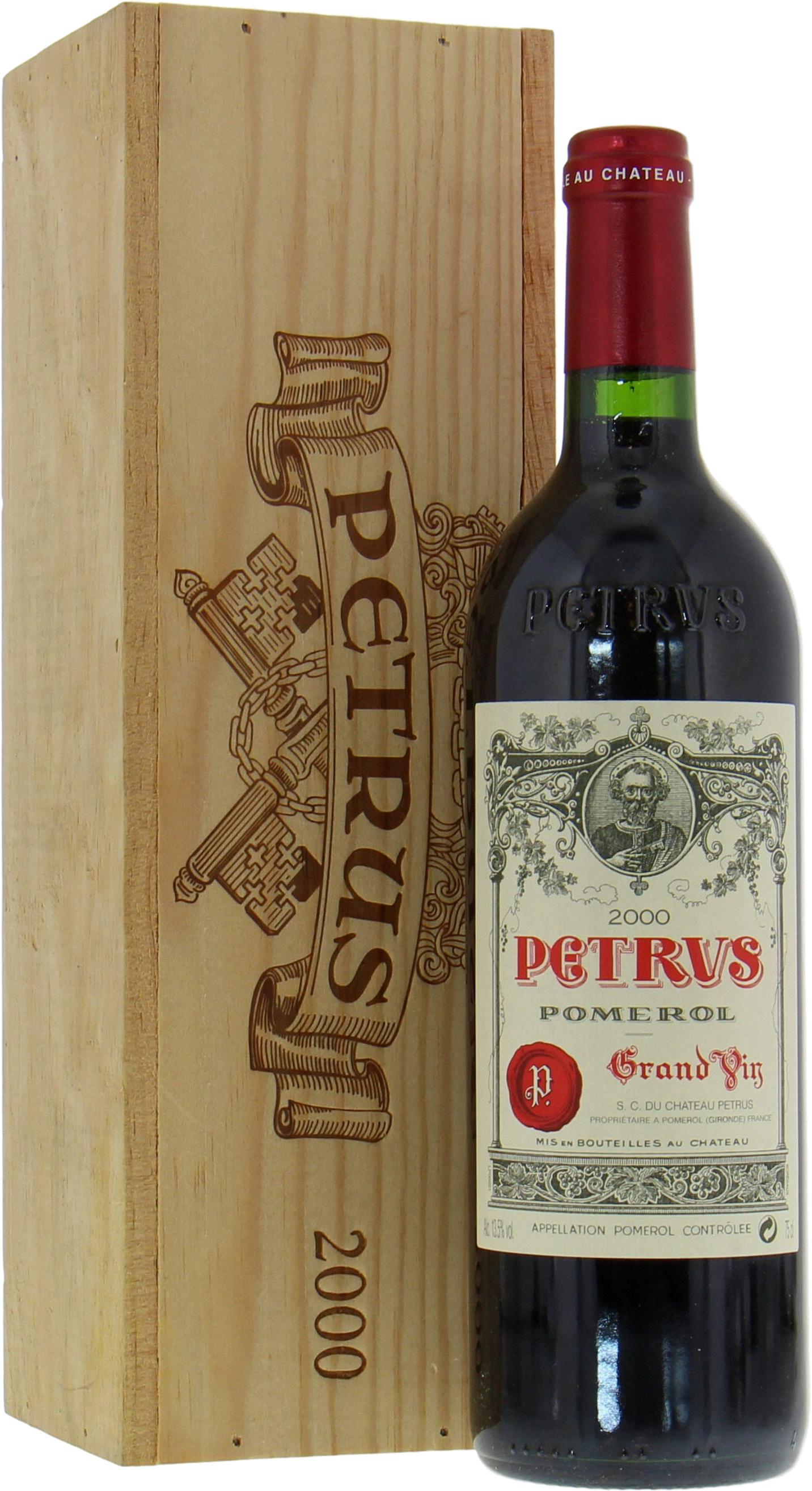
Who is the Owner of Chateau Petrus?
Chateau Petrus is currently owned by Alejandro Santo Domingo, a Colombian-American financier and philanthropist who purchased a stake in the renowned winery in 2018. Santo Domingo's personal fortune has been estimated at $3.9 billion, placing him at 499 on the Forbes World Billionaire's list that same year. Originally founded in 1811 by Jean Pierre Moueix, Chateau Petrus is now managed by his great-grandson Christian Moueix, who is also the proprietor of other prestigious wineries such as Château La Fleur-Pétrus, Trotanoy and Latour à Pomerol.
In conclusion, Chateau Petrus is an iconic and exceptional wine that is highly acclaimed and sought after. Its unique terroir of blue clay subsoils, quality rootstocks and careful vinification all contribute to the complexity of its taste and longevity. The most expensive bottle in the world, Petrus 2000, Cuvée de l'espace, is estimated to be worth $1 million or 830,000 euros. Chateau Petrus is undeniably one of the best red wines in the world and will continue to be a sought-after investment for years to come.
Thomas Ashford
Grand Tour Tickets Now on Sale! 200+ great wines, 3 great cities: New Orleans, Las Vegas, Denver
Wine Spectator

- I'm a member Sign In
- I'm not a member Subscribe
- Insider Weekly
- My Personal Wine List
- Value Wines
- Newsletter Subscriptions
- Manage My Account
- My Control Panel
- Ratings Search
- Daily Wine Pick
- Tasting Reports
- Winery Intel
- Vintage Charts
- About Our Tastings
- Ask Dr. Vinny
- Know Your Grapes
- What Am I Tasting?
- Wine & Health
- Readers' Dogs
- Winery Dogs
- Going Native
- Wine & Design
- Search Winners
- All Grand Awards
- Enter the Awards
- Dining Articles
- Recipe Search
- Wine & Food Pairing
- Member Benefits
- Online Subscription
- Print Subscription
- Online Gift Subscription
- Print Gift Subscription
- Email Newsletters
- Magazine Archives
- For the Trade
- Submit Wines
- Enter Restaurant Awards
- Shanken Ratings Network
- MarketWatch Magazine
- Shanken News Daily
- Retailer Club
- Advertise with Us
- 40th Anniversary
- Wine Shop Search
- Wine School

Member Links
Srn member links, a visit with pétrus' christian and edouard moueix.
- James Molesworth
Along with my colleague Thomas Matthews, I have been in Bordeaux this month . To evaluate the 2008 vintage in bottle, we've blind tasted nearly 450 reds, dry whites and Sauternes. You can read the first batch of reviews in the upcoming Dec. 15 edition of our weekly Insider newsletter, available only to WineSpectator.com subscribers. Now I am visiting different châteaus to check out the evolution of the 2009 wines. Read about my first stop, with Jean-Philippe Delmas at Château Haut-Brion, in my previous post .
One thing is for sure around here: None of the top dogs are sitting on their laurels. While the elite wines of Bordeaux are fetching prices that can seem absurd, the money is clearly being put back into the wineries. Both Cos-d'Estournel and Latour have recently completed major cellar overhauls while both Cheval-Blanc and Mouton-Rothschild are in the midst of doing their own. There's new construction planned at both Châteaus Margaux and Pétrus as well. Bordeaux may be a wealthy region (at the top end), but it is certainly not idle.
Christian Moueix
When I asked for a visit with the elder statesman of the Right Bank, I figured we'd meet at his office, talk and taste a bit. When he said to meet him in the parking lot at Pétrus , the famed Pomerol estate, I figured I'd be lucky enough to get a cellar tour as well (cellar tours are not automatically given around here).
When I pulled up at Pétrus, Christian and his son Edouard met me—and I noticed Christian had his pruning shears with him.
"Let's take a walk in the vineyard," he said. "I want to show you some things."
Now we're talking ...
It's only a few short steps to get into the middle of Pétrus' modest 12 hectares of vines. And from there what you see is Pomerol fanning out around you.
"It's a bump," said Moueix. "A gentle bump, but a bump, here at Pétrus. We are very proud of our 40 meters of elevation," he added dryly.
"Below the bump, just a few meters lower, is the plateau of Pomerol, with clay and gravel soils," said Moueix. From there he points out the properties that ring Pétrus, like spots on a sundial, La Fleur on the north side, La-Fleur-Pétrus on the northeast, Gazin on the east, then L'Evangile, Conseillante, Vieux-Château-Certan, Certan de May and Trotanoy. It's clear the plateau is home to the top properties, which tend to be smaller and as a group make up only about one-third of Pomerol's 800 hectares.
From there the appellation dips again, down to a belt of clay where Bourgneuf, Beauregard, Nenin, Plince, Petit-Village and others have their vines. A final ring of sand then marks the limits of the appellation, where less expensive soils mean properties can develop larger vineyard plots—the labels that are the more everyday, accessible wines of the appellation, such as de Sales, Clos Rene and L'Enclos.
As for Pétrus, Olivier Berrouet is taking over the winemaking, following in the footsteps of his father, the longtime winemaker Jean-Claude Berrouet. The Moueix team has managed the estate since 1952 (Moueix's father purchased it in 1964) and the Ets. J.-P. Moueix négociant house has been its exclusive distributor all along—that is unlikely to change. It's clearly something dear to Moueix's heart.
"I'm happy to say I've pruned each of the 60,000 vines on the estate," he said. "For me, pruning is like jogging for someone else. It's what makes me feel good, knowing I did it at the end of the day."
From there we drive over to St.-Emilion, to see the efforts underway at Château Bélair-Monange , which Moueix purchased in 2008 (changing the name from Bélair). It's one of the prime spots on St.-Emilion, at the top of the hill, neighboring Ausone, with prime parcels on both limestone terraces and clay soils below. It's a rarity in the appellation to have both.
"Bélair fell asleep," said Edouard. "We are exciting about bringing it back."
It will not be easy. An old parcel of vines dating to the turn of the century had to finally be pulled up as production had dropped precipitously—it will now lie fallow for a few years. The limestone quarries underneath the château and vineyards have been pilfered over the years for their stones, to the point where they are structurally tenuous. Moueix is now shoring them up
"We asked if anyone in the appellation wanted to help us, because St.-Emilion is like Swiss cheese now underneath," said Eduoard. "This is a big problem. But most people kept their heads down when we asked."
When I mentioned I'd had a bottle of the '98 Bélair a few nights earlier, both Christian and Eduoard raised their eyebrows inquisitively, wanting to know how it was. "A wine with beautiful aromas, perhaps a touch austere on the palate, but it sang for a few minutes," I said.
"That is great to hear," said Christian. "We know how much potential there is here. It's difficult to find the balance between the austerity and perfume the limestone gives, with the power and flesh the clay parcels give. It takes 10 years to understand a vineyard, so we are just at the beginning here."
The tour continued at Providence , back in Pomerol, where the small, efficient cellar has both cement and stainless steels vats.
"I love the cement vats for their temperature inertia," said Moueix. "I am a bit old school. But they are large so it's hard to do smaller parcel selections in them, and we are going more and more that way as we look for precision. The stainless steel tanks give us that flexibility."
Precision is now the buzzword around Bordeaux. It's what all the vignerons say they are striving for in their wine, the way Rhône vignerons talk of minerality for example. In Bordeaux, it's popular to tout the latest technological toy—an optical sorter for example—as the châteaus try to leapfrog each other in pursuit of the precision.
"I am looking for precision," said Moueix, when I press him on the issue. At what point does human control of the winemaking process become too much? Can you eliminate complexity by searching for an unattainable goal of perfect precision?
"It's true, we have become maniacs with selection. I agree at some point it could be too much. This is a question we have to ask ourselves," said Christian, before turning to Edouard. "We should discuss this at the next meeting," he said.
"You're right," said Edouard. "There is the old school and then there is technology. They can work together if you ask yourself first, before you try something new, 'Who am I?'. If you can answer yourself that question, then you can move forward."
"I think of the past," said the elder Moueix. "The '90 Pétrus for example, I made without temperature control and without parcel selection. I think it turned out to be a pretty good wine. But '00, '05, '09, I see what progress and advancements have allowed us to do in the cellar, and it's truly amazing how far we have come."
We then taste through a range of the family's top '09 bottlings, starting first with the Château Magdelaine St. -Emilion 2009 , which offers a tight beam of mineral and very cherry/raspberry fruit. It's pure and unadorned, tight on the finish and very, very solid. The Château Bélair-Monange St. -Emilion 2009 shows a beautiful dusty edge, with floral, perfume and raspberry sauce notes and a silky texture. The long chalky spine is buried deep on the finish, sweet and pure. The Providence Pomerol 2009 is super lush, but refined at the same time, with raspberry, cherry compote and red licorice. It stays pure and driven and has latent power but this is about finesse, even in a grippy vintage like '09. All three are easily outstanding, and the Bélair is the one I'd buy now to start a vertical off, as Moueix brings the property back to life.
The Château La Fleur-Pétrus Pomerol 2009 (Merlot with 10 percent Cabernet Franc) is very tight today and showing its wood too, with a briar note on the edges of the dark raspberry, blackberry and cherry compote notes. It has a long, spice- and tobacco-filled finish and is showing lots of range and plenty of grip too. The Château Hosanna Pomerol 2009 (Merlot with 20 percent Cab Franc) is denser and darker than the La Fleur-Pétrus, with more black currant, licorice and blackberry fruit notes. It's tighter grained too, with sweet spice hints on the slightly muscular finish. Despite the power, it's seamless; both it and the Hosanna flirt with classic quality.
"This estate was bought in '99, and as I said before at Bélair, I always feel you need 10 years to start to understand a vineyard," said Moueix of Hosanna. "So the timing was perfect for '09."
We finish with the Château Trotanoy Pomerol 2009 , which is dense and very layered, with superb length to the gorgeous blackberry and raspberry fruit and loads of buried sweet tobacco, mulled spice and fruitcake notes, all pure and stylish. It's a clear classic in the making.
As we finish, we step back outside and Moueix, who has been hanging on to those pruning shears, said "If I don't get to prune a vine though, I will not be happy, so come, and let's do one."
Moueix then demonstrated how he wants a straight cane, so the shoot length can be even and the fruit evenly spaced, all aimed at homogeneous ripening. I watch as Moueix snips away the old shoots and then positions the cane for next season. It's precision, from the ground up. But the smile on his face tells you it's not mania, just a long-simmering passion.
[You can now follow James Molesworth on Twitter, at http://twitter.com/jmolesworth1 .]
You Might Also Like
Napa's 'new' historic silverado vineyards.
The Stags Leap District Cabernet Sauvignon pioneer is changing the script with a new …
Video: Down by the River, at Beaulieu Vineyard
There’s a lot more to taking care of a vineyard than caring for the vines; at BV, it also …
At Napa's Frias, It's Family Farming over Flash
Second-generation grapegrower Fern Frias is quietly making outstanding Spring Mountain and …
Nickel & Nickel's Single-Vineyard Napa Cabernets Find a New Gear
Winemaker Joe Harden's hot hand has this longtime Napa Cabernet powerhouse flashing a …
Winemaking as Metronome: How Greg Brewer’s Wines Come to Be
A complete 13-vintage vertical tasting of Brewer-Clifton's Machado vineyard Pinot Noirs …
Titus Vineyards' Promising 2021 Napa Cabernets
The ripe and racy profile of the 2021 Napa vintage played right into the hands of Titus …
Free Wine Spectator Email Newsletters
Sign Up for Wine Spectator’s Free Email Newsletters and stay up-to-date with all things wine.
WineRatings+
Restaurant search, wine spectator podcasts.
- Get the App

Wine Legend: Château Pétrus 1945
- Wine Legends
Why it makes the wine hall of fame...
Wine Legend: Château Pétrus, Pomerol, Bordeaux 1945
Bottles produced 16,500
Composition 100% Merlot
Yield 30 hl/ha
Alcohol N/A
Release price N/A
Price today £8,250 at Bordeaux Index
A legend because…
This was one of the great vintages of the 20th century, surpassing, in the view of many experts, the equally celebrated 1961. There is an additional poignancy linked to the 1945 vintage, since it had to be produced so soon after the end of the Second World War, and many conscripted vineyard and winery workers would have died in battle. Nor would it have been possible to purchase new barrels and other equipment so soon after the cessation of hostilities. Nonetheless, all the first growths made superlative wines, and Pétrus, from the Right Bank, was their equal.
Looking back
From the mid-1920s, Mme Edmond Loubat had been buying up parcels of Pétrus, an estate in existence since the 1830s, and by 1945 she was the sole owner. She knew perfectly well the quality of the terroir and of the wines, and demanded high prices.
The Moueix family of Libourne has long been associated with the property, though it was only in 1943 that Jean-Pierre Moueix was appointed a non-exclusive distributor for its wines. By 1947 he was the sole purchaser, a position his son Jean-Francois has inherited.
Although regarded as the finest wine of Pomerol, prices for Pétrus in 1945 were less than half those demanded for the first growths of the Médoc. But by the mid-1950s they were neck and neck, an acknowledgement of the estate’s reputation and consistency.

The vintage
A severe frost on 2 May did extensive damage and reduced the crop to very low levels. However, the summer that followed was superb, with hot, dry weather that allowed the harvest to take place early and in ideal conditions. The grapes were exceptionally ripe, and some batches apparently reached an alcohol level of 15%, but would have been blended with less overwhelming lots. However, overall quantities were considerably reduced, and this was the smallest vintage since 1915. While the vintage was widely hailed as great in the Médoc, it was also of the highest quality in distant Pomerol.
The terroir
Pomerol has varied terroir of fluctuating quality, but all agree that the finest soils lie on the plateau that roughly surrounds the church. Château Pétrus certainly lies within this magic circle, but its soil is atypical: it is composed of a ‘buttonhole’ of rich, blueish clay that lies over a gravel subsoil which, in turn, rests on iron-rich clinker. This soil, being mostly clay, retains moisture, which helps to minimise stress in hot, dry years, but the gentle slope of the plateau also ensures the vines are well drained. Just a single hectare out of its 12 hectares of vines (there were only 6.5ha in 1945) is planted on gravelly soil. The dense clay soils give wines of power rather than finesse, though in great years Pétrus manages to combine the two.
For many years Pétrus has been fermented in concrete vats, but these were installed long after this vintage. The 1945 was destemmed - which is not always the case here - and then fermented in large wooden vats. Ageing of the 1945 vintage took place for 22 months in older barrels – no new oak being available at the time.
The reaction
Michael Broadbent found the wine disappointing in the 1970s but then changed his mind in the 1980s: ‘Hugely impressive, with a lively depth of colour, a bouquet that opens up gloriously… and, for a big wine, elegant.’ Also in the 1980s, David Peppercorn found the wine ‘still deep in colour, rich and powerful but with some volatility, and less complex than the marvellous 1947’. At a Paris tasting of 23 vintages in 1987, the 1945 came in 17th, although Edmund Penning-Rowsell rated it more highly.
In 2002, a group of Barclays bankers made the headlines for spending £44,000 on wine at London’s Pétrus restaurant, including £11,600 on a bottle of the 1945 vintage; it is not known how they rated it.
Subscribe to Decanter and get the latest wine legends every month…
More wine legends:, wine legend: wynns, john riddoch cabernet 1982, wine legend: jl chave, cathelin, ermitage 1990.
For decades Gérard Chave has been regarded as the supreme exponent of the wines of Hermitage...
Wine Legend: Isole e Olena, Cepparello 1982
What makes it a legend...
Wine legend: Pingus 1995
Why it makes the Decanter hall of fame...
Wine Legend: Krug 1928
Wine legend: château palmer 1961, wine legend: gaja, barbaresco 2001, wine legend: château montrose 1990.
What makes Château Montrose 1990 a worthy wine legend...
Wine Legend: Dom Pérignon 1975
What makes Dom Pérignon 1975 a wine legend...?
Wine Legend: Meerlust, Rubicon 1995
This ancient property was one of the first in South Africa to offer a high-quality Bordeaux-style blend
Latest Wine News
Sonoma wine country property with syrah vines listed at $9.4m, sotheby’s wine and spirits auction sales hit record $159m, yellow tail producer unveils largest solar farm in the australian drinks industry.
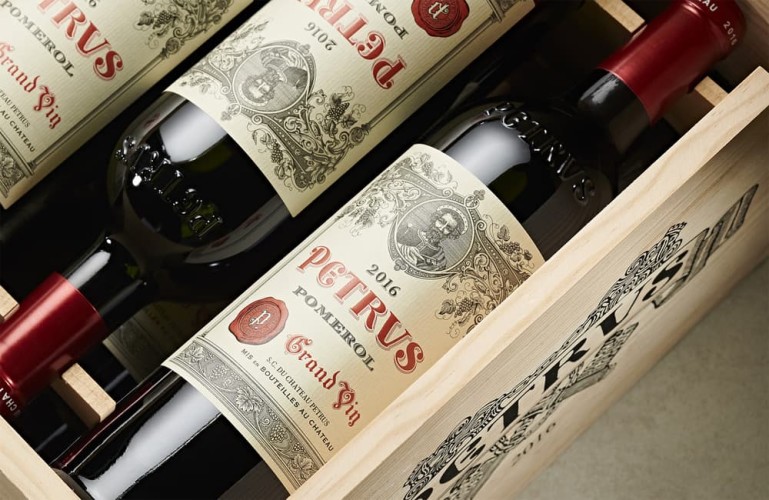
Simple modern wine investing
Wine consistently outperforms other alternative assets. vinovest makes wine investment easy., chateau petrus, pomerol: 10 outstanding wines to buy in 2024.
The exclusive Petrus red wine has nothing less than a star-studded fan base, including the British royal family members and the Kennedys!
The Petrus estate went as far as aging their extraordinary 2020 vintage wine in space. In 2021, Christie’s released this space wine at a private auction for $1M.
Let's explore Chateau Petrus in detail - the flavor profile of the wine, best vintages to buy, the estate’s vineyards , and winemaking practices . We’ll also look at why a bottle of Chateau Petrus is so expensive and if it’s worth investing in this Bordeaux wine.
Further reading
- Explore everything you need to know about Pomerol Wine - the classification, terroir, and the best bottles.
- Also, learn more about the Top 10 Merlot Wine Bottles for your collection.
This Article Contains
- An Introduction to Chateau Petrus
Petrus Wine: Tasting Notes and Food Pairings
- The Best Vintages of Chateau Petrus
- Why is Chateau Petrus so Expensive?
Why Should You Invest in Petrus Wine?
- Chateau Petrus: Vineyard And Viticulture
- Chateau Petrus Winemaking Process
A Brief History of Chateau Petrus
The pomerol appellation, an introduction to chateau petrus .
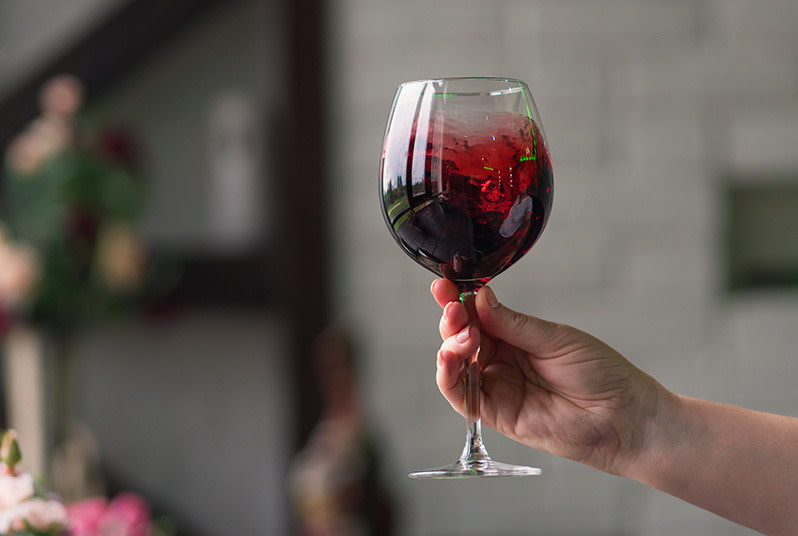
The Chateau Petrus wine estate, owned by the Mouiex family, is located in eastern Pomerol in the Bordeaux region of France, neighboring La Conseillante.
This Chateau produces one of the most exceptional single-varietal red wines using the Merlot grape.
The name “Chateau Petrus” comes from “St. Peter” (Petrus in Greek), meaning “rock.” During the warmer months, the soil at Chateau Petrus dries and becomes as hard as a rock.
The Petrus estate measures only 11.5 hectares - one of the smallest in Bordeaux.
Let’s explore the mouth-watering Petrus wine in detail.
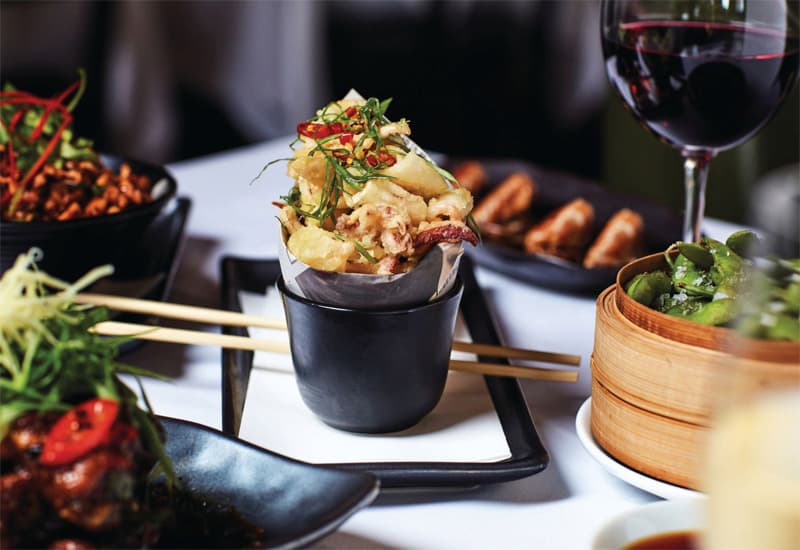
Petrus Grand Vin is bold, velvety, and soft with intense fruit flavors with medium to high acidity. This red wine is much loved for its elegance, intensity, and complexity.
The Merlot grape also adds incredible floral aromatics to the wine.
This opulent French wine can go with a sublime duck ragoût or Agneau De Pauillac, a lamb dish from Bordeaux. Other meat options to go with this wine bottle are pork, veal, and beef.
Petrus wines also pair deliciously with mushroom risotto or pasta with a creamy Bordeaux cheese sauce.
The Best Vintages of Chateau Petrus
Here’s a handpicked list of the best Petrus wines.
- 1947 Petrus Vintage
- 1951 Petrus Vintage
- 1961 Petrus Vintage
- 1968 Petrus Vintage
- 1982 Petrus Vintage
- 2000 Petrus Vintage
- 2005 Petrus Vintage
- 2010 Petrus Vintage
- 2015 Petrus Vintage
- 2018 Petrus Vintage
1. 1947 Petrus Vintage ($6,098)

The Bordeaux summer of 1947 was boiling hot, but thanks to the subsoil of blue clay, the Merlot grapes still had access to water. This year produced a rich, opulent Petrus Grand Vin with a palate of black fruit and unsmoked cigars.
2. 1951 Petrus Vintage ($7,186)
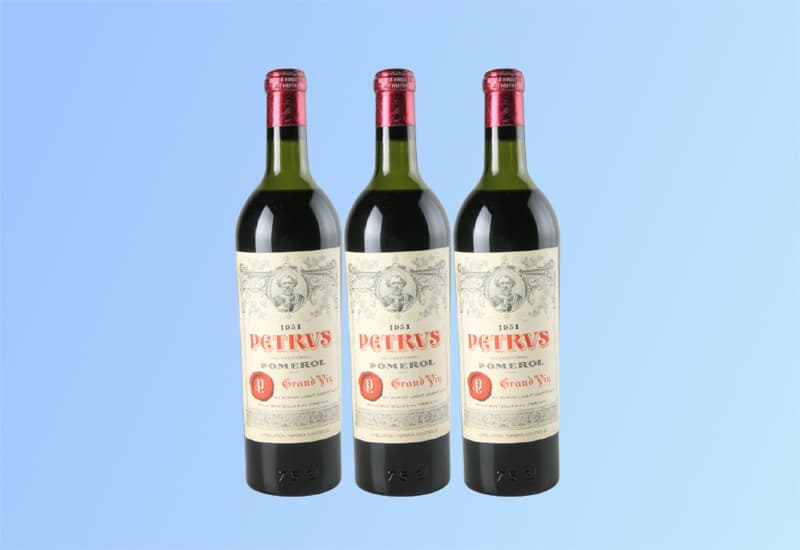
The second wine on the list is the 1951 vintage. This French wine is full, dry, and delicious with delightful tasting notes of licorice and the richness of ripe mulberry and vanilla oak. Despite its age, there is a bold freshness about this bottle.
3. 1961 Petrus Vintage ($10,590)
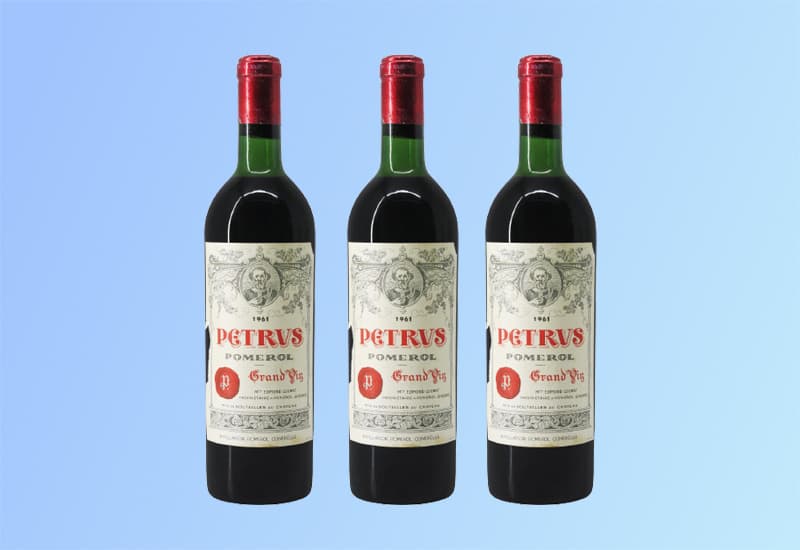
The 1961 vintage is a bold, earthy vintage wine with a palate of leather, truffle, and warm black plums.
4. 1968 Petrus Vintage ($5,920)

This bottle is a beautiful vintage from the end of the 60s. It is a bold, red wine bottle with notes of cinnamon stick, vanilla oak, and a fruit palate of dark chocolate-covered cherries.
5. 1982 Petrus Vintage ($5,647)

This Bordeaux wine is full of the richness of black fruit aromas, with a taste of ripe mulberry, Ceylon tea, and a subtle waft of red roses.
6. 2000 Petrus Vintage ($6,825)
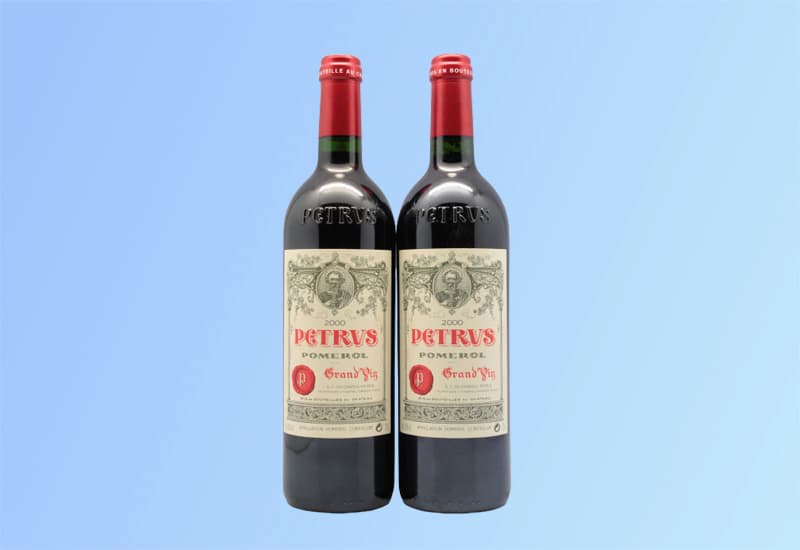
This millennium vintage has a palate of chocolate, cinnamon stick, black cherry, and licorice with black currant and Ceylon tea undertones.
7. 2005 Petrus Vintage ($6,753)
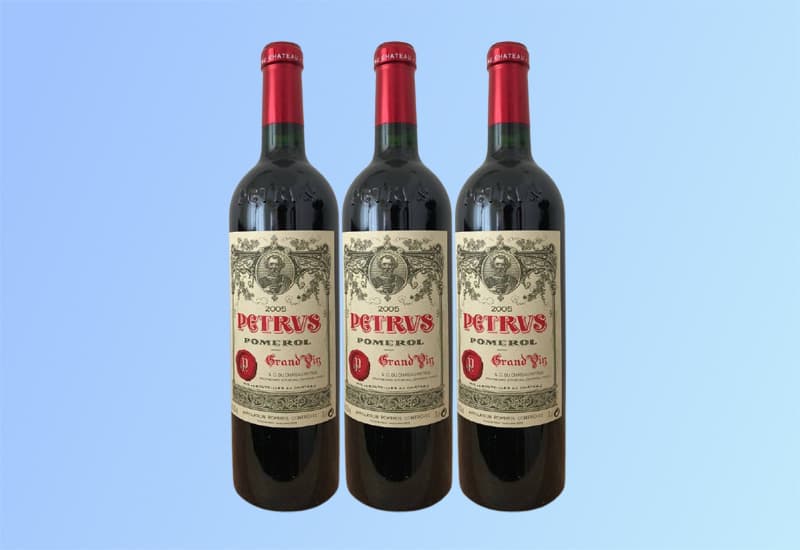
This unique and elegant Bordeaux wine will take your breath away with a provocative ferrous undercurrent, an aroma of vanilla oak, and seductive notes of dark chocolate-covered cherries.
8. 2010 Petrus Vintage ($6,047)
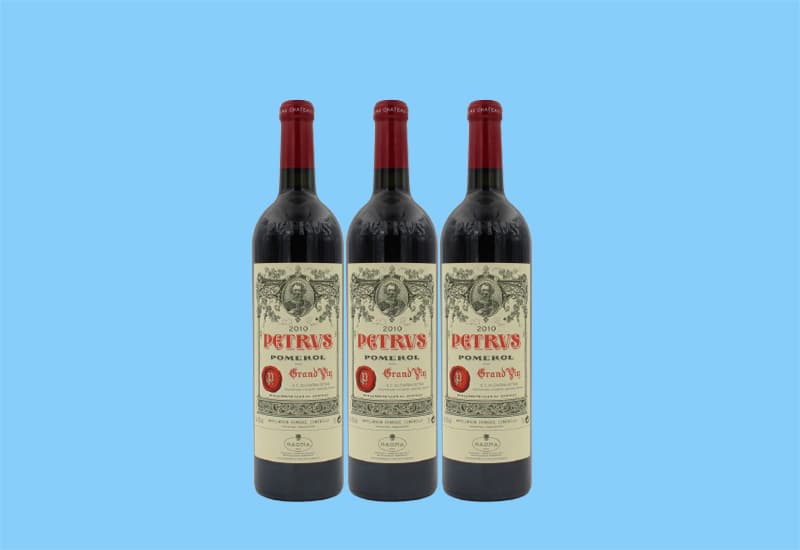
This red wine has an exquisite bouquet of unsmoked cigars, a rich black fruit flavor, and the bold freshness of Ceylon tea and cinnamon stick.
9. 2015 Petrus Vintage ($5,131)
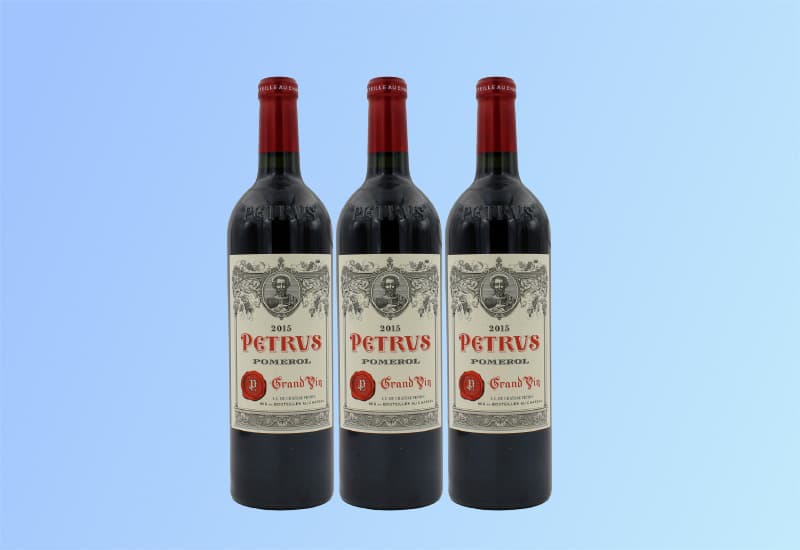
Though this Petrus Pomerol wine is only five years old, it is bold, elegant, and smooth. A wine lover will admire its black cherry and mulberry palate with a red rose and truffle aromas.
10. 2018 Petrus Vintage ($5,714)

Another rich red wine , this Petrus packs seductive dark fruit notes of black currant, black cherry, warm black plums, and the freshness of licorice. We recommend waiting for this fine wine to age before drinking - between 10 and 20 years, to be prudent. It's also a great investment wine.
So, what makes Petrus such an expensive wine ?
Why is Chateau Petrus So Expensive?
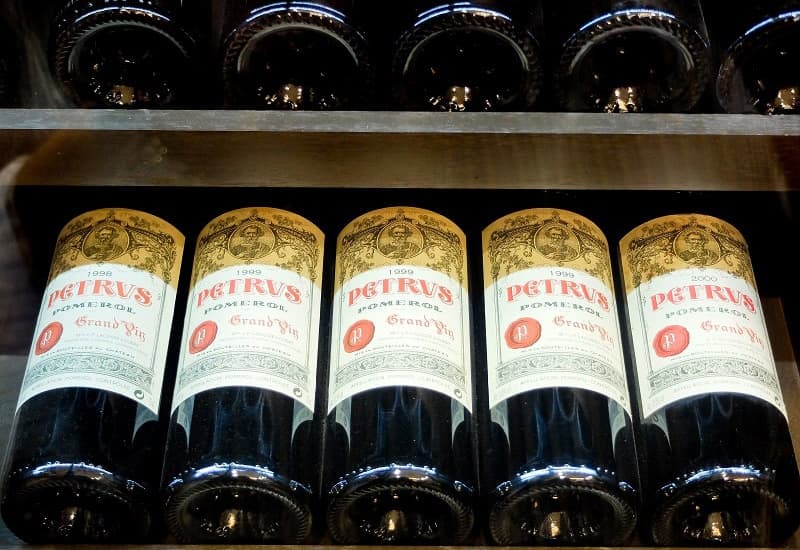
The exceptional terroir of the Pomerol appellation, the high-quality rootstocks, and the careful vinification make the Chateau Petrus Pomerol an inimitable wine!
Add to it the fact that Petrus’ vineyard is small, and the estate has a limited annual production (and some years, none at all) - only about 30,000 bottles.
This scarcity is one of the reasons why you often find this wine at prestigious wine auctions.

The unique quality, scarcity, and popularity among wine critics like Robert Parker and wine magazines like Wine Spectator and Wine Advocate will continue to drive up the desirability and prices of Petrus wine.
The Petrus index (that tracks the price movement of the last ten vintages) - was up 37% over five years (2013-17), outperforming the Liv-ex 100 (up 19.9%) and the Bordeaux 500 (27%) over the same period.
Chateau Petrus also performs extraordinarily well at auctions, with many wine lovers prepared to pay whatever it takes to get their hands on a bottle of this outstanding wine.
For example: In 2018, at the Heritage Auction, a Chateau Petrus 2000 vintage was sold for $51,660. At the same auction, the 1990 vintage bottle drew $44,280, and the 1998 vintage was sold for $38,130.
In short, investing in a Chateau Petrus can potentially guarantee you handsome returns.
The “space wine” Petrus 2000 could potentially fetch a million dollars when auctioned. According to vine research scientist Philippe Darriet, it isn’t just any wine that has spent time in space, it’s a Petrus!” (It was aged in space for around 440 days in the Nicolas Gaume - led Space Cargo’s spacecraft.)
And you can do it effortlessly with a trusted wine investment firm, Vinovest , that helps wine collectors across the globe buy, store, and sell authentic and rare vintage wines .
So, why are Chateau Petrus Pomerol vintages so exceptional?
Chateau Petrus: Vineyard And Viticulture

Chateau Petrus stands out from other vineyard plots because of its unique terroir and grape processing techniques carefully selected by Michel Gilet, Petrus’ viticulturist.
The vines are located on top of an ancient island mound known as Pétrus boutonnière or Petrus’ buttonhole, taking up roughly half of its area.
The blue clay soil in the buttonhole is over 40 million years old and is unique to the plot.
There are two layers of clay soil in the vineyard - the dark clay topsoil and an iron-rich, dark blue, smectite clay subsoil. This clay is very hard, but it absorbs and stores water which the vines soak up in summer.
Jean François Moueix believed this unique terroir was best for the Merlot grape variety - a red grape variety with a dark blue color, thin skin, and low tannin.
So, since 2011, only Merlot vines have been planted in the Petrus vineyard.
The Pomerol vines were planted in the 1950s, so the average age of a Chateau Petrus vine is around 65 years.
Chateau Petrus Winemaking Process
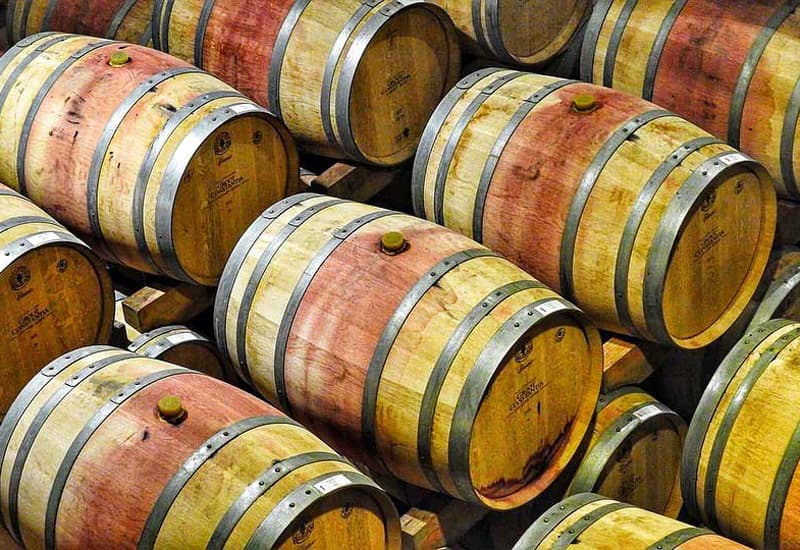
Chateau Petrus follows a low-yield, high-quality grape winemaking process.
They use the “green harvesting” (or éclaircissage) method for managing the vineyard - a crop thinning technique where unripe grape bunches are cut off. It allows the remaining grapes to ripen fully.
The grapes are handpicked and crushed gently, after which, they are placed in concrete vats for vinification (the process of fermenting grape juice into wine.)
Next, the grapes undergo maceration - a winemaking process where the crushed grapes impart tannin, color, and flavor to the wine.
The wine then ferments inside French oak barrels for 18-20 months. These are 50% new oak barrels that previously had water to cleanse their strong tannin taste.
Francois Veyssiere (Cellar master and collector of fruit trees) replaces the oak barrels in rotation because, as they age, they lose their ability to impart flavor and structure to the wine.
If the vines have a bad year and are not up to Petrus’ standard, then the estate doesn’t produce a vintage that year.
Petrus also does not produce a second wine.
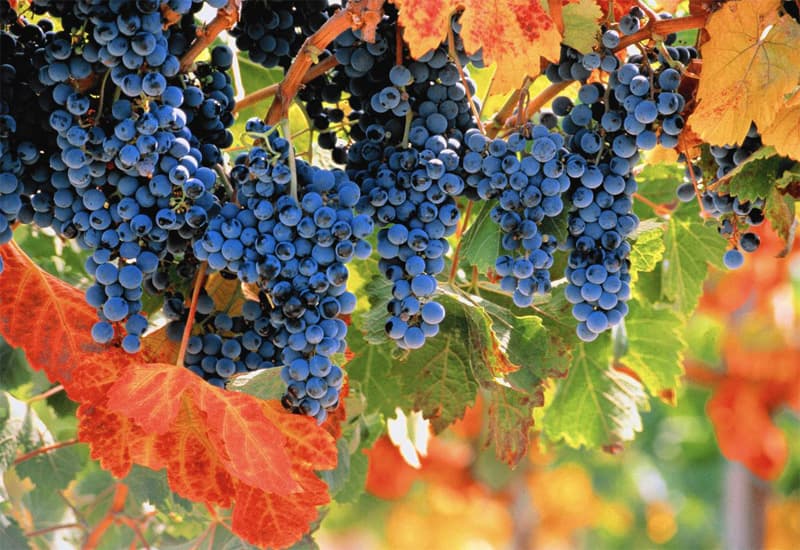
The Arnaud family, the estate’s first owner, boosted Petrus’ sales and price when their wine won the gold medal at the Paris Exhibition in 1878.
In the 20th Century, the Arnaud family created a share-holding company, “La Société Civile du Château,” and sold shares of the Petrus estate.
Slowly, Madame Edmond Loubat, who owned Château Latour à Pomerol, started acquiring these shares until she owned the entire estate by 1945.
Madame Loubat propelled the success of Petrus wine with her 1945 vintage.
In the same year, Jean Pierre Mouiex, owner of the Etablissements Jean Pierre Moueix negociant house, obtained Petrus’ exclusive selling rights.
In 1947, Madame Edmond Loubat gifted the Lord Mayor of London (who was there for the wedding of Princess Elizabeth) two Petrus bottles, successfully introducing it to British high society.
After a dreadful winter in 1956, Madame Loubat started practicing coppice harvesting in the vineyard. It involved cutting the vines on the surviving rootstocks instead of replanting.
After Madame Loubat’s death, Jean Moueix acquired the vineyard. He worked alongside esteemed winemaker Jean Claude Berroeut - the man behind excellent Lafleur, La Magdeleine, and Chateau Trotanoy wines.
Today, Jean Francois Moueix and Olivier Berrouet (son of Jean Claude Berrouet) own the vineyard. Colombian billionaire Alejandro Santo Domingo also has a 20% stake in the estate.
Let’s also take a quick look at the Pomerol appellation.
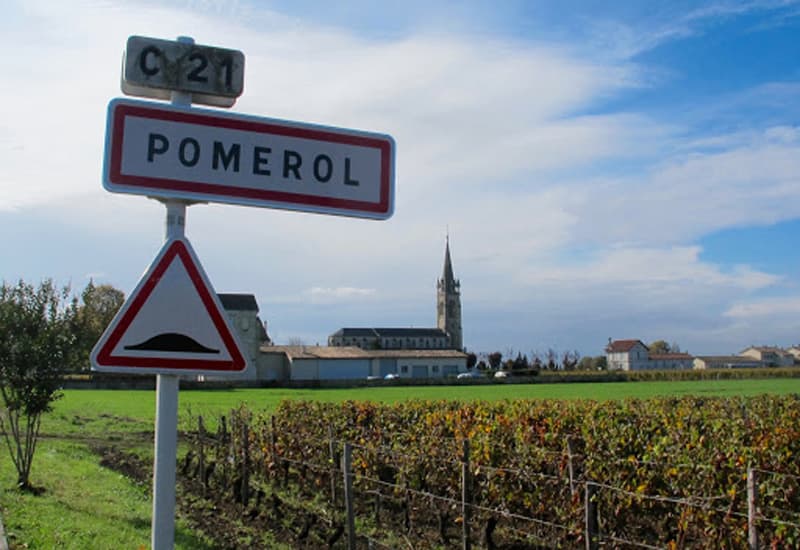
Pomerol is the smallest of Bordeaux’s five key wine regions and lies on the right bank of Bordeaux . It was granted AOC (Appellation of Controlled Origin) status in 1936.
This right bank region is also home to great vineyard sites like Château Gazin, Vieux Château Certan, and Château Trotanoy.
The Pomerol estates have been left out of more than one Bordeaux Classification, including the 1855 Bordeaux Classification and the Crus Bourgeois Classification, while regions like Medoc and Saint-Emilion were included.
Today, Pomerol houses some of the oldest vineyard sites and some of the most extraordinary estates, including Petrus and Le Pin .
Ready to invest in a coveted Petrus?
Curating an Impressive Wine Portfolio Couldn’t Get Easier!
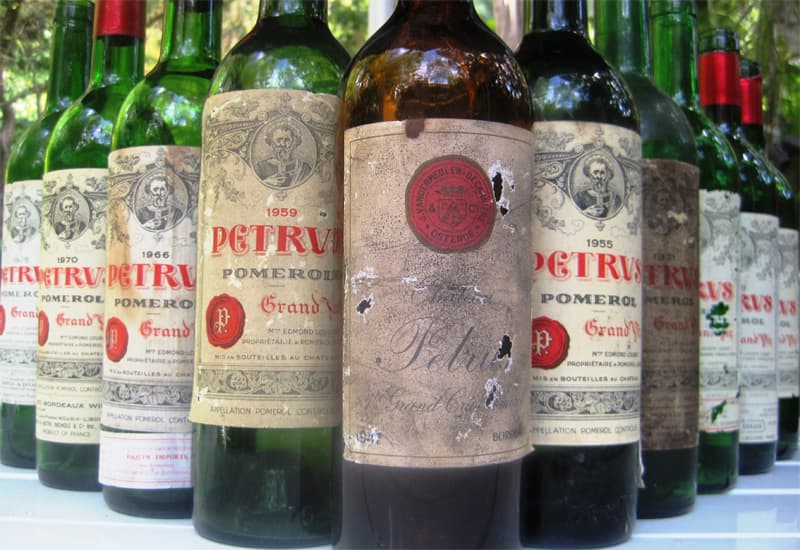
Opening a bottle of Petrus Pomerol is an experience like no other. It is sheer elegance in a bottle while being an excellent investment wine.
And if you want to curate an impressive portfolio of wines, including Merlot, Cabernet Sauvignon, Chenin Blanc, and any other fine wine, Vinovest is undoubtedly your ideal wine investment partner.
Sign up on Vinovest and start buying and selling expensive wine bottles from across the globe - be it from New Zealand, South Africa, or the United Kingdom!

Anthony Zhang
Related articles.

Cava Wine: Regions, Styles, 8 Best Bottles to Try (2024)
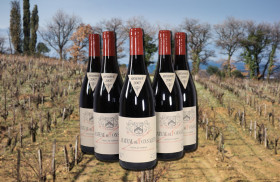
Chateau Rayas (Winemaking, Best Wines, Prices 2024)
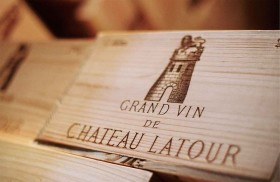
Château Latour (Winemaking, Best Bottles to Buy in 2024)
Start investing in minutes.
Open an account, make a deposit, and start growing your wealth.

Château Pétrus Pomerol 2011

A Visit to Chateau Cheval Blanc, Saint-Emilion, France
2024 update: Chateau Cheval Blanc is now focused on receiving wine professionals
Chateau Cheval Blanc, 1st Grand Cru Classe A, is one of the top 4 Saint-Emilion wineries according to the most recent Saint-Emilion classification .
It is believed that vines have been grown at Cheval Blanc at least since the 15th century.
The most prestigious period of Cheval Blanc’s history began in 1832, when Jean-Jacques Ducasse, President of the Libourne Trade Tribunal, started to buy plots of land from Château Figeac assembling the 39-hectare vineyard of Chateau Cheval Blanc which has remained practically unchanged since that time.
Jean Laussac-Fourcaud replanted part of the estate in the 1860s with the unusual mix of grape varieties: 50% of Merlot and 50% of Cabernet Franc. The blend of of Chateau Cheval Blanc still remains almost unchanged.
Today, the winery is owned by LVMH Moët Hennessy – Louis Vuitton and continues to produce one of the most prestigious wines in France.
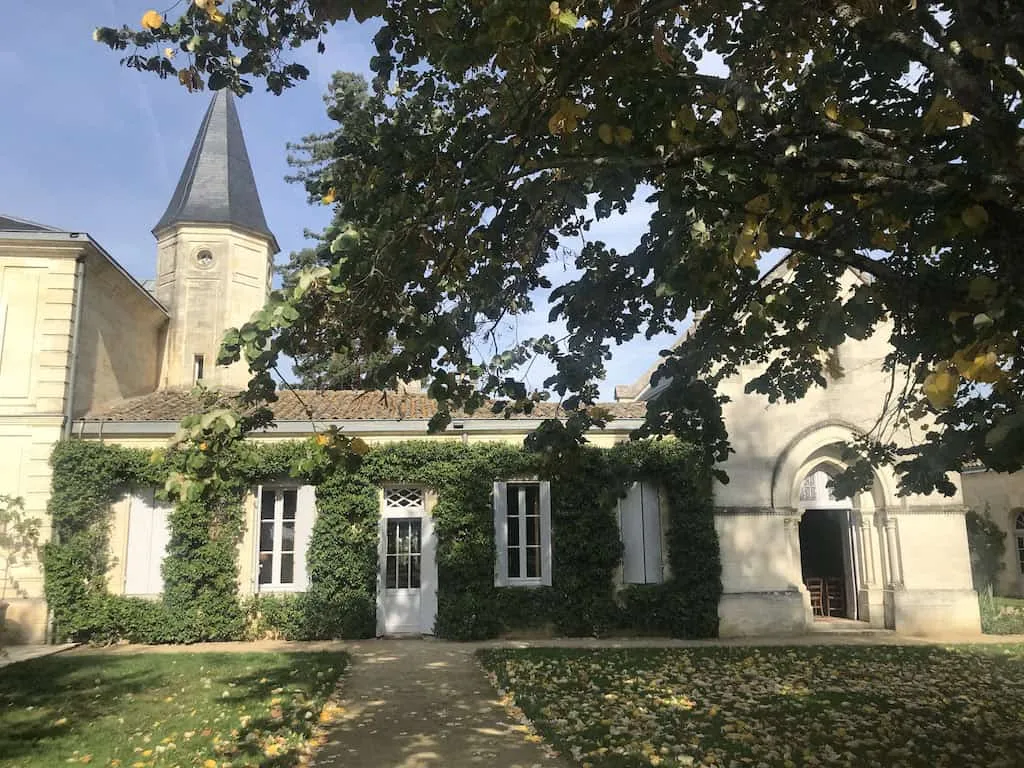
The old classic chateau with a chapel is adjacent to the futuristic new cellar designed by Christian de Portzamparc, the winner of the 1994 Pritzker Architecture Prize.
This building containing the new vat room and the cellar was completed in June 2011 and allegedly came at a cost of approximately $20 million.
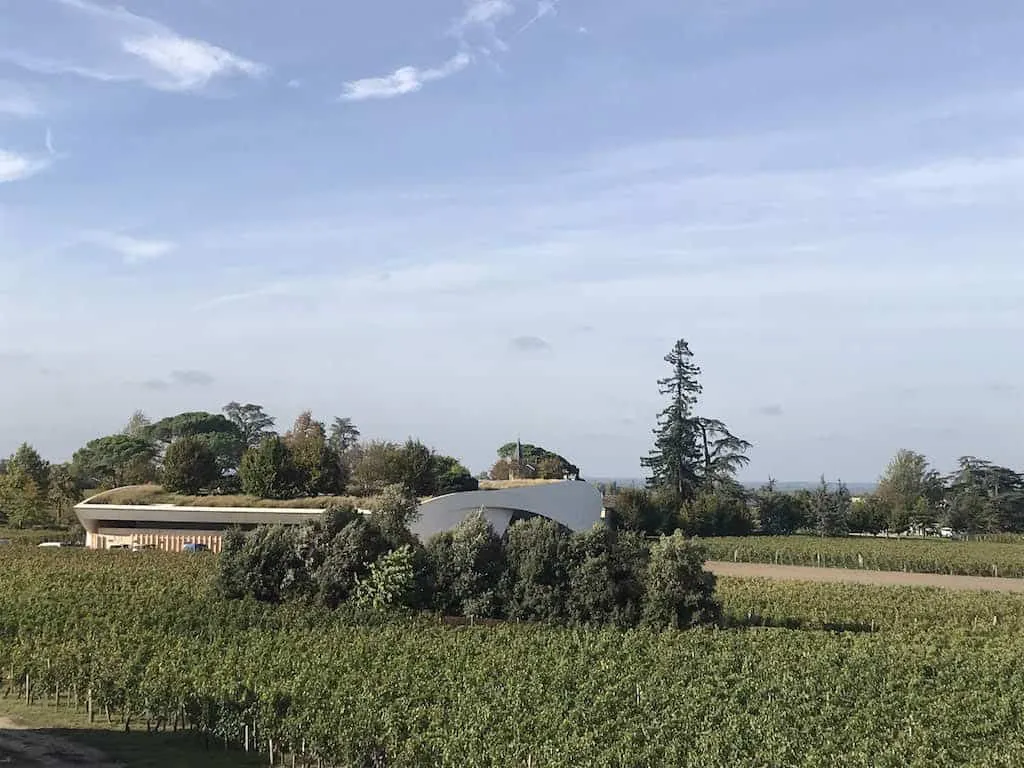
Chateau Cheval Blanc is on the border of Saint Emilion and Pomerol, home of another Bordeaux gem, the legendary Petrus.
The terroir of Cheval Blanc is unique in a way it combines three different types of soils: fine soils textured with clay, coarse soils textured with gravel, and large gravel with sand. The 39-hectare estate of Cheval Blanc is divided into forty-five distinct parcels.
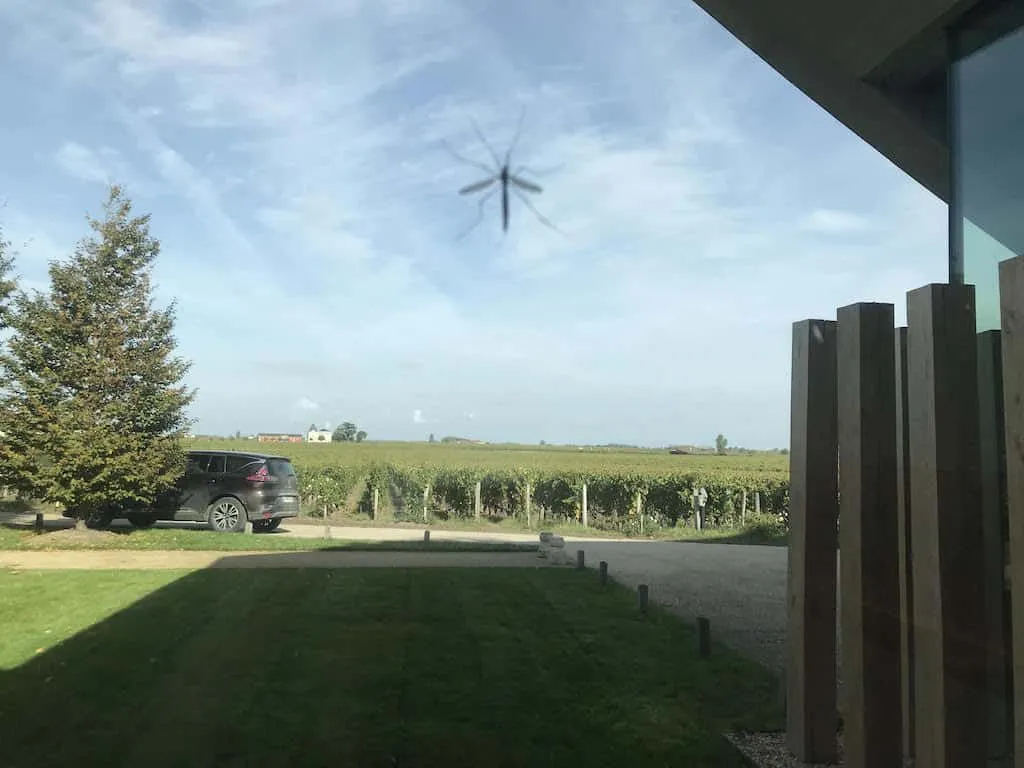
A view on Chateau L’Evangile in Pomerol from the tasting room of Chateau Cheval Blanc.
The estate uses the original combination of grape varieties: 52% Cabernet Franc, 43% Merlot, and 5% Cabernet Sauvignon. A larger proportion of Cabernet Franc is unusual for Saint-Emilion and Pomerol, where most blends are dominated by Merlot, the king of the RIght Bank.
Each of the plots is characterized by its soils, microclimate, grape varieties and age of vines.
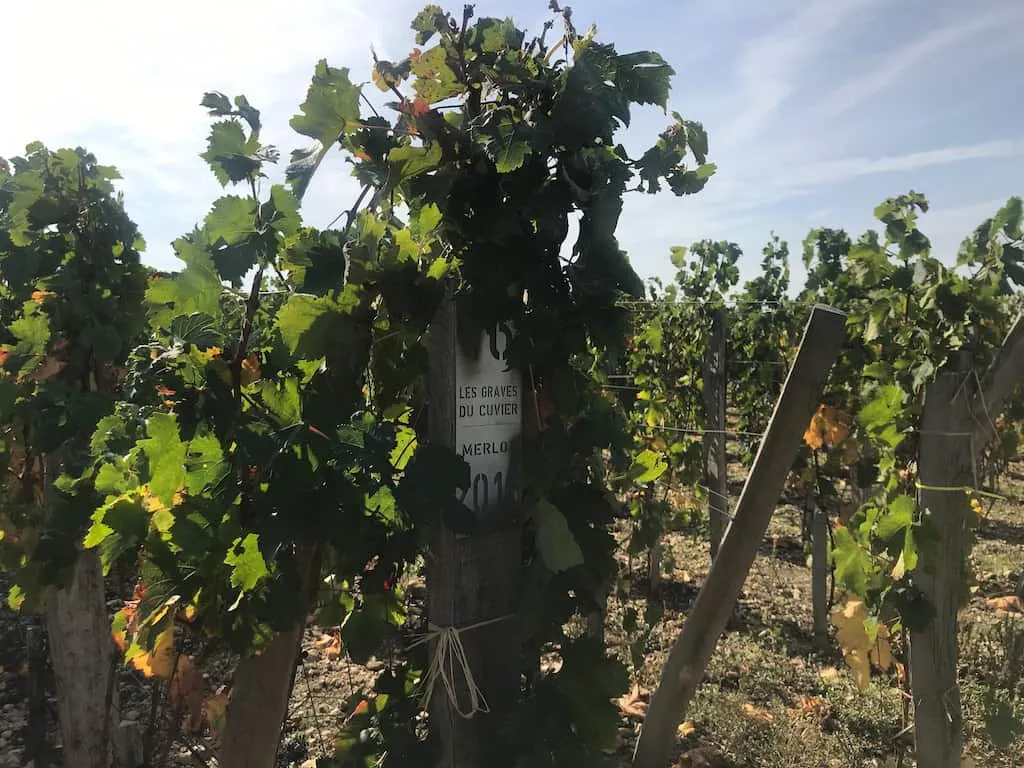
Chateau Cheval Blanc’s Merlot vineyards after harvest.
Sorting tables, destemming equipment and vertical press base.

Vertical press is used to extract pressed wine from skins after the alcolohic fermentation has completed.

Pressed skins will be given to the state as a from of tax, and later will be used to make medical alcohol and such.
We are in the famous state-of-the-art cellar of Cheval Blanc. Here, each of the 52 vats is assigned to a specific parcel in the vineyard. The vats made in Italy of the new-generation concrete are marked with a parcel number and the grape variety.
The capacity of each of these vats is adjusted to a size of an individual vineyard. In fact, the vats come in 9 different sizes varying from 20 to 110 hectoliters.
As the wine produced from each plot has its own profile, the separate vinification method gives potential to express unique qualities of each vintage during the blending process. The winemakers are creating a blend made from vines of different ages and grown on different types of soils.
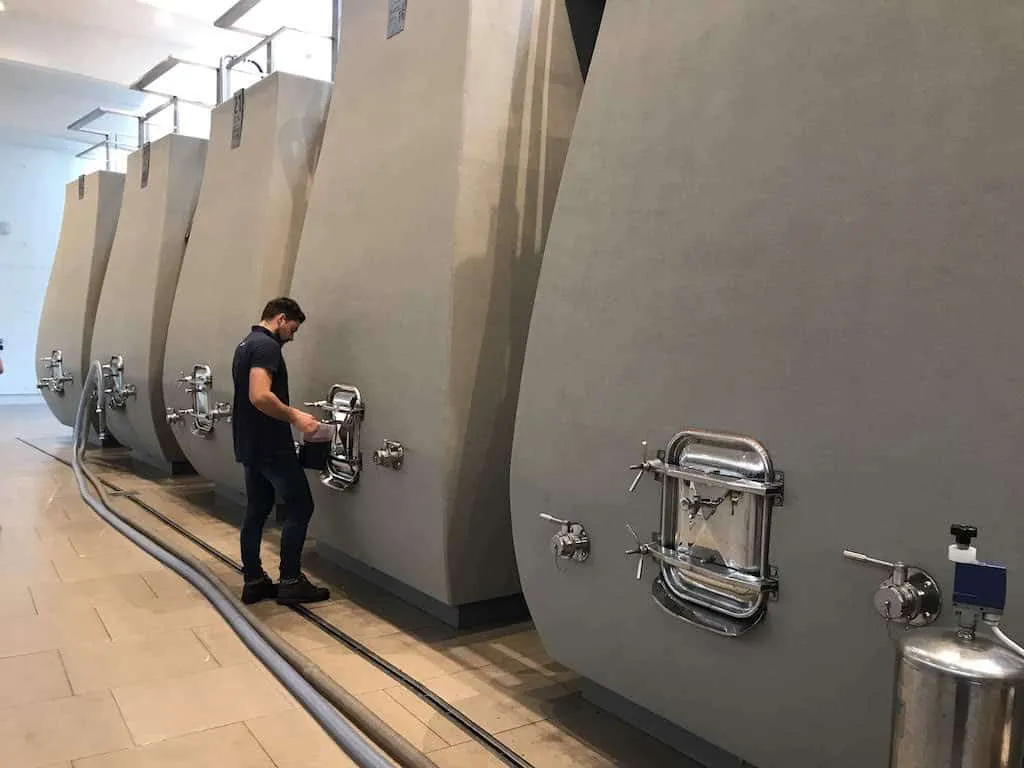
No posts found!
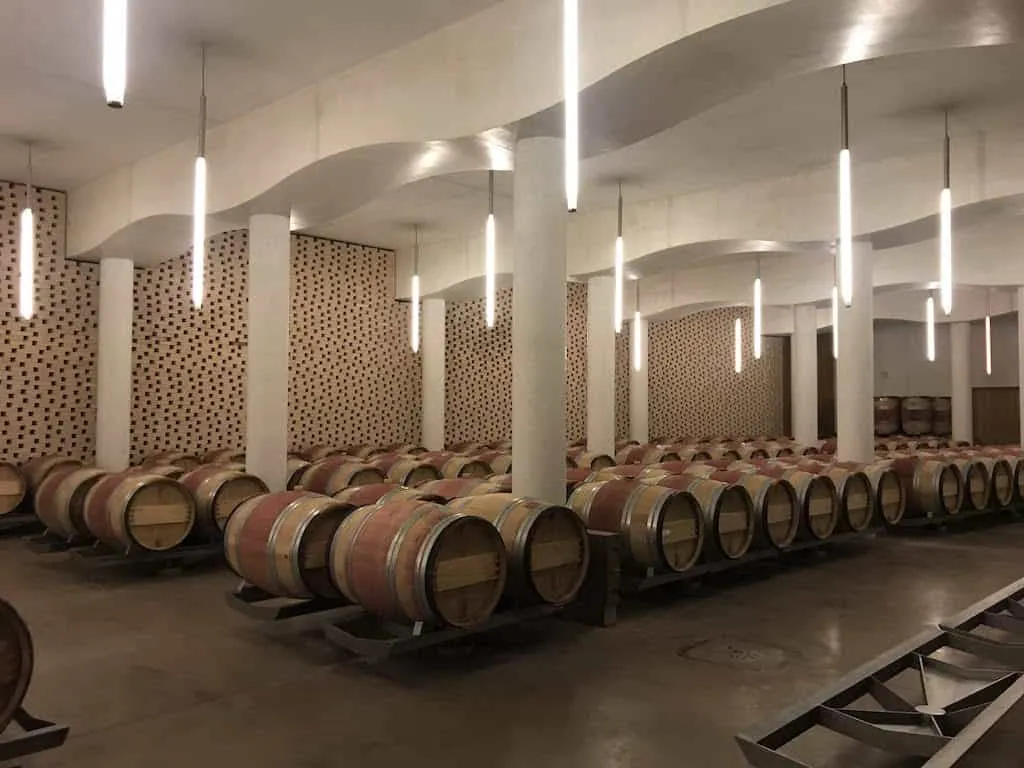
The vast underground cellars of Chateau Cheval Blanc hold between 300 and 450 barrels where the wine spends sixteen to eighteen months at a constant temperature of 14°C, or 57.2 F.
The barrels for Chateau Cheval Blanc are made exclusively from French oak trees coming from the famous forests of Tronçais in the Allier department and Bercé in the Sarthe department of France.
The oak trees are often aged for 180 to 200 years, or even 350 years, prior to becoming barrels for the Cheval Blanc wines.

New oak barrels for the new vintage of Chateau Cheval Blanc are waiting to be filled with precious wine.
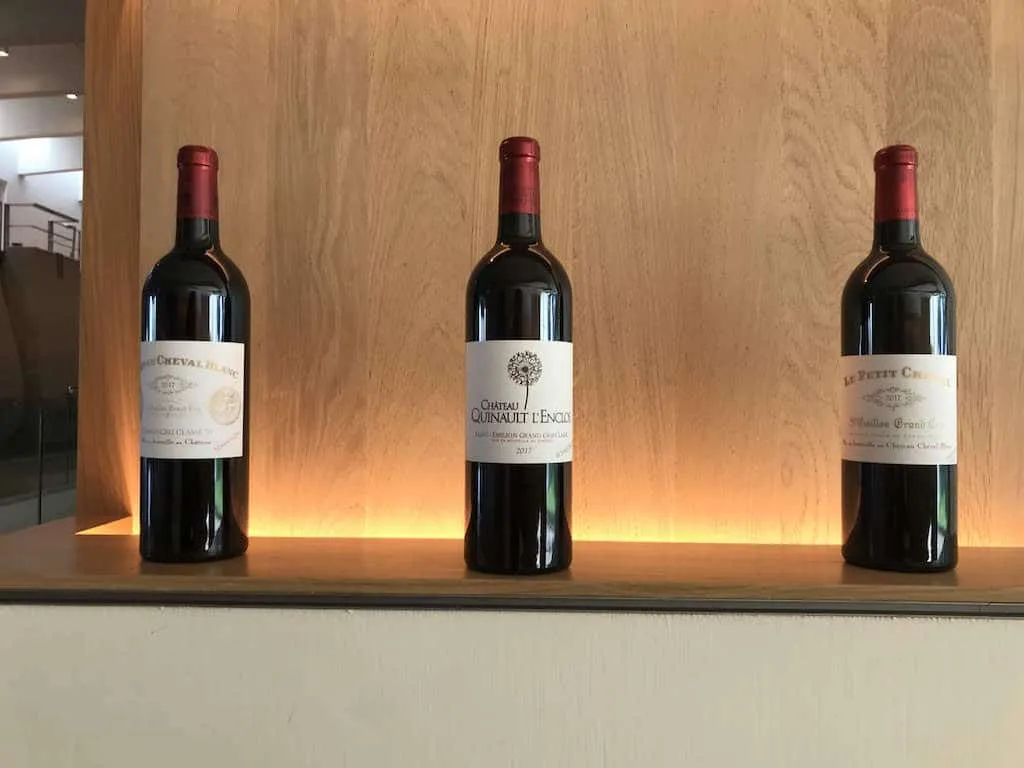
Among the best vintages of Chateau Cheval Blanc are 1947, 1961, 1964, 1982, 1990, 2009 and 2015.
Along with the grand wine, Chateau Cheval Blanc, the estate produces two second wines: Le Petit Cheval and Le Petit Cheval Blanc (white).
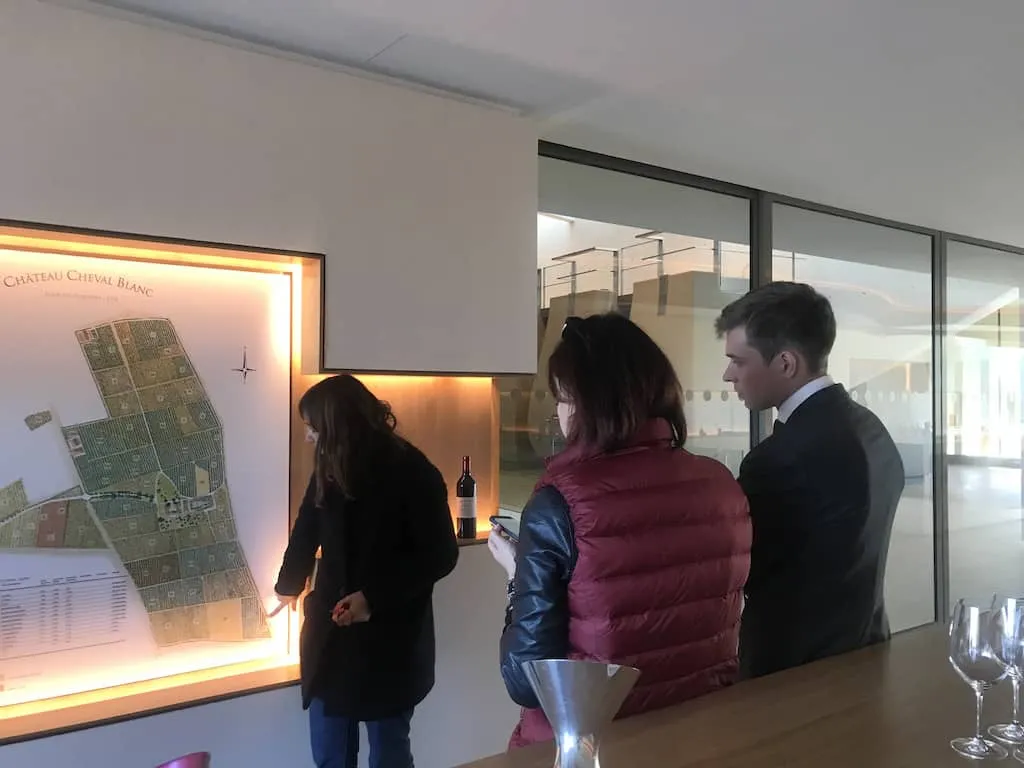
Another special experience at Chateau Cheval Blanc is the cellar roof with a garden. The rooftop opens to a great view on Saint Emilion and Pomerol vineyards.
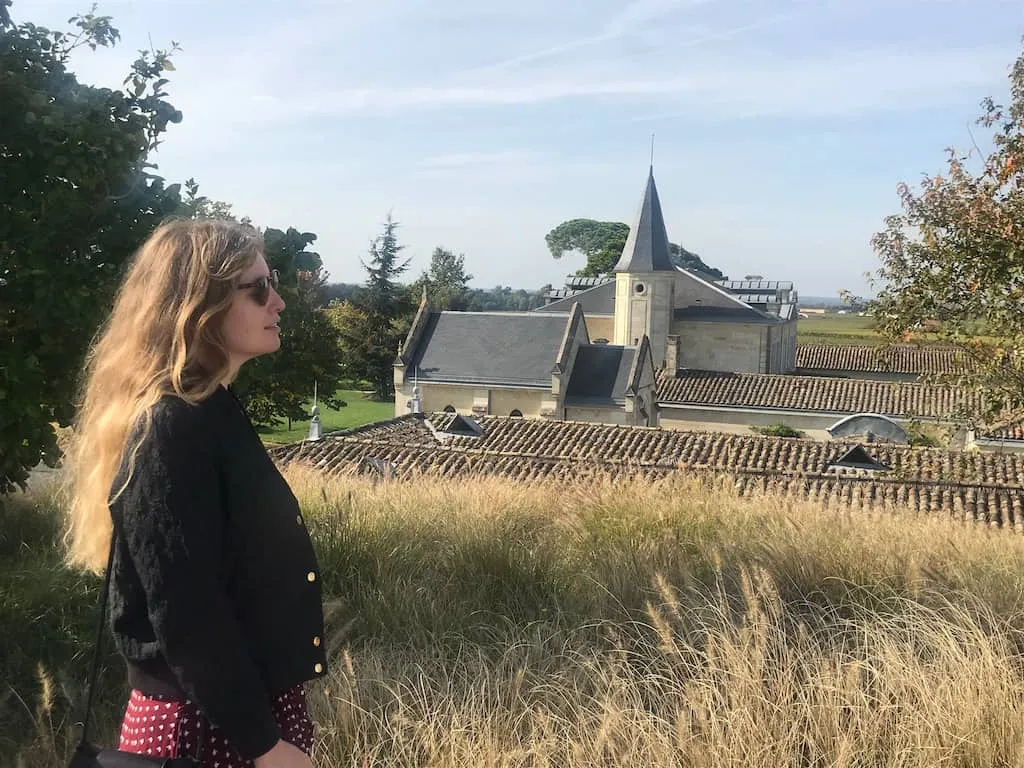
This artsy elevator runs from the cellars to the rooftop.
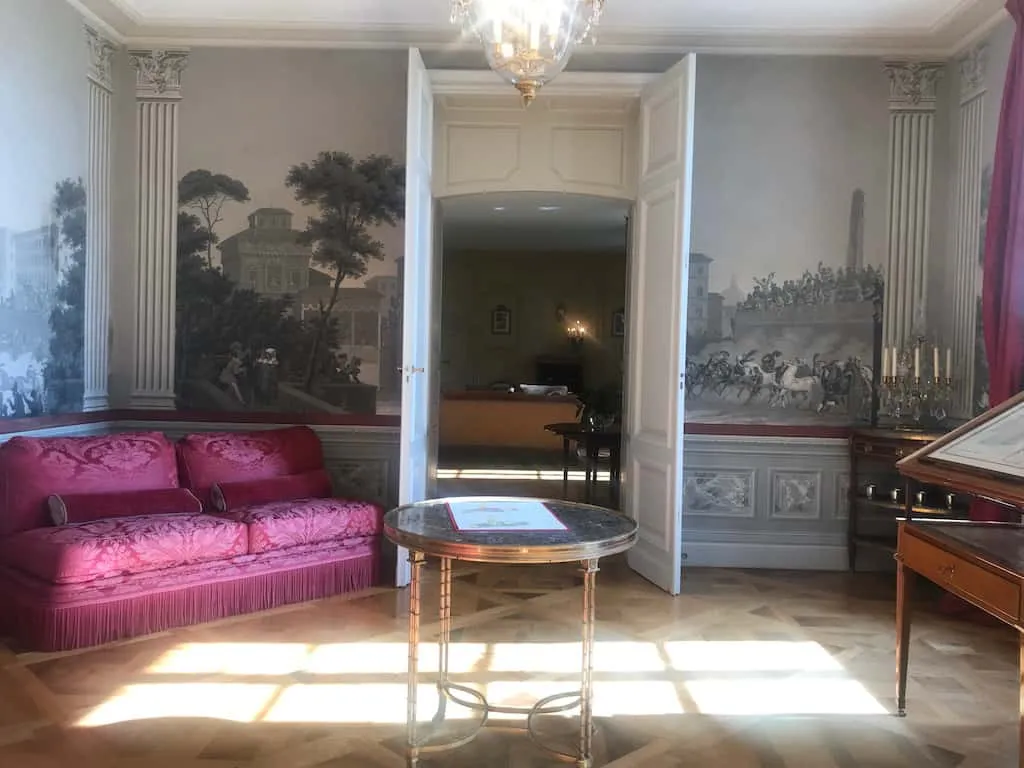
A glimpse of the classic interiors inside the old castle.
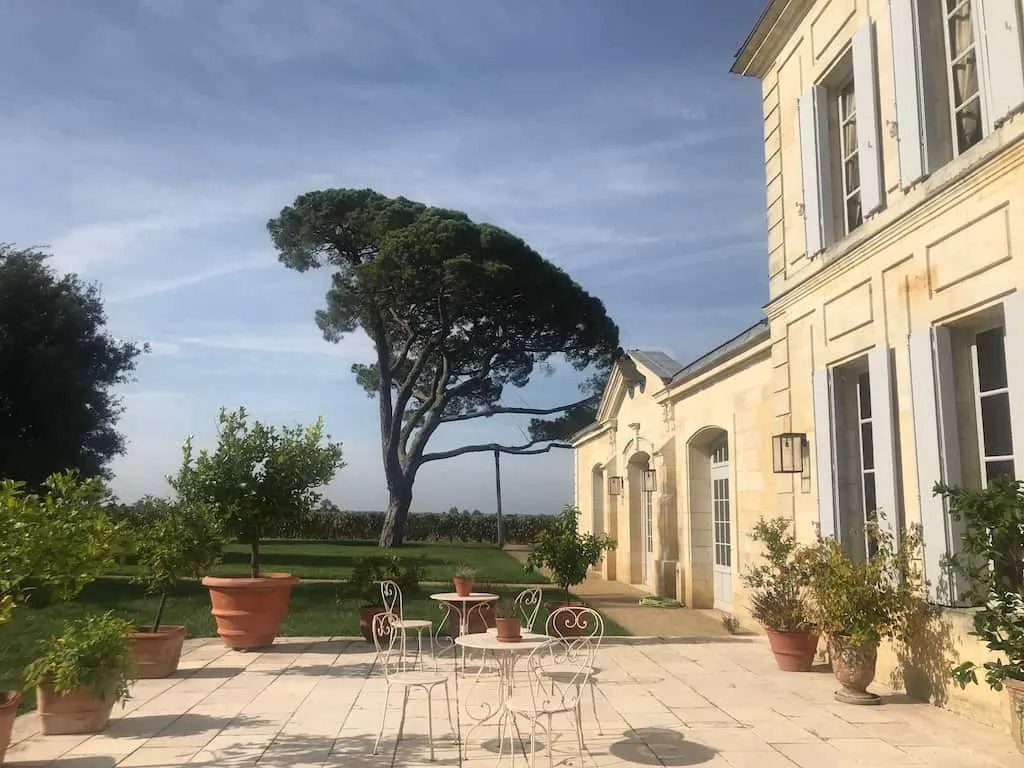
A sunlit terrace overlooking the vineyards.

If you are interested to taste Cheval Blanc in the US, some vintages and futures are available through Millesima , a Bordeaux wine merchant in the United States.
At the time of this article, they had the 100 Parker points 2010 vintage available, as well as the excellent 2006 (97 Parker points) and the legendary 1982 in stock.

Why to Buy Futures/En Primeur Wine?
See my blog for more tips on visiting Bordeaux vineyards and learn about my private Bordeaux wine tours .
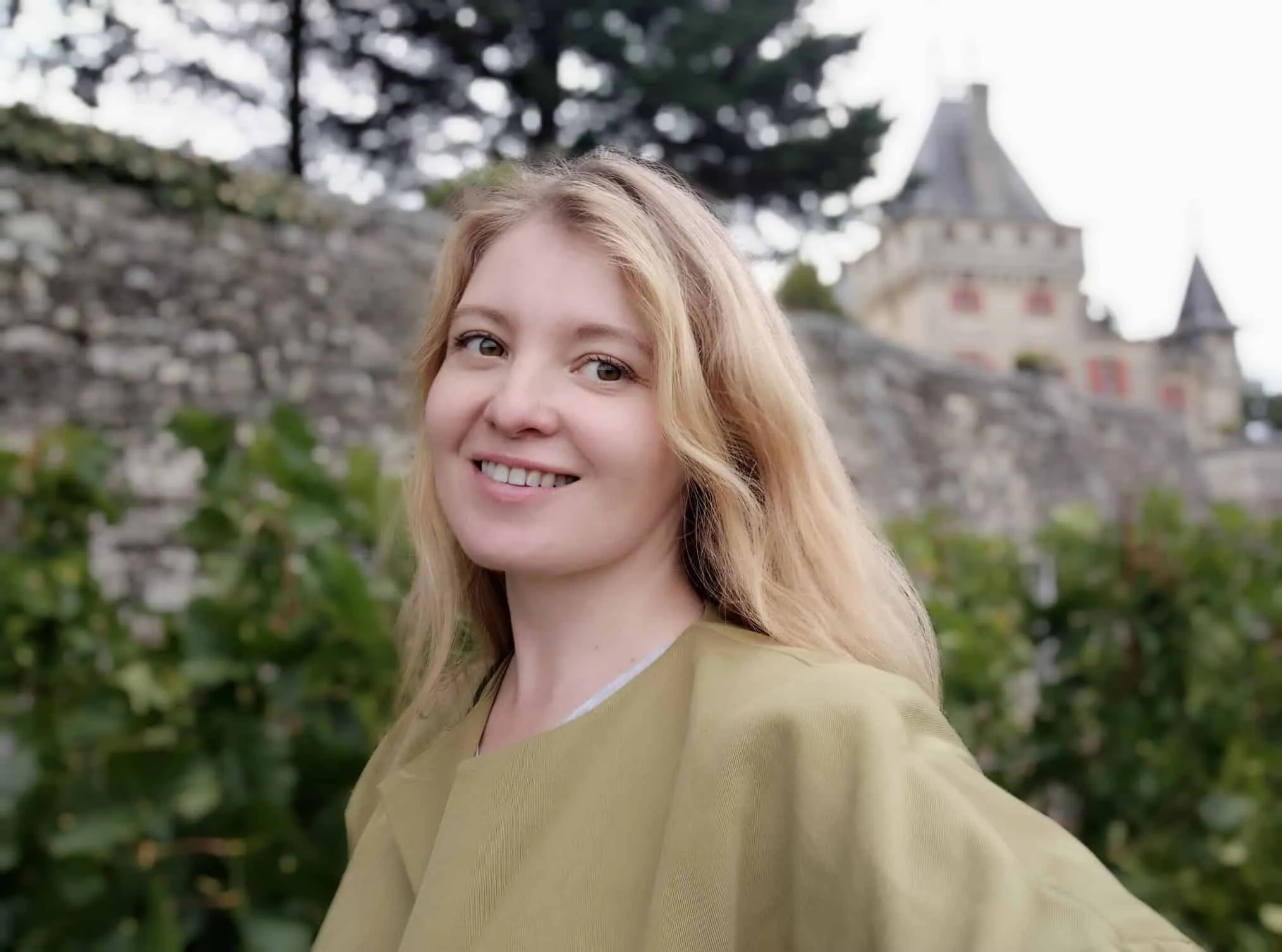
Polina Spirova
A sommelier and an experienced wine tour guide, I travel across Europe, collecting the best wineries to visit, best places to stay and eat.
I organize Bordeaux wine tours.
My Bordeaux Blog

Plan Your Bordeaux Trip Itinerary

How Many Wineries Are in The Medoc?
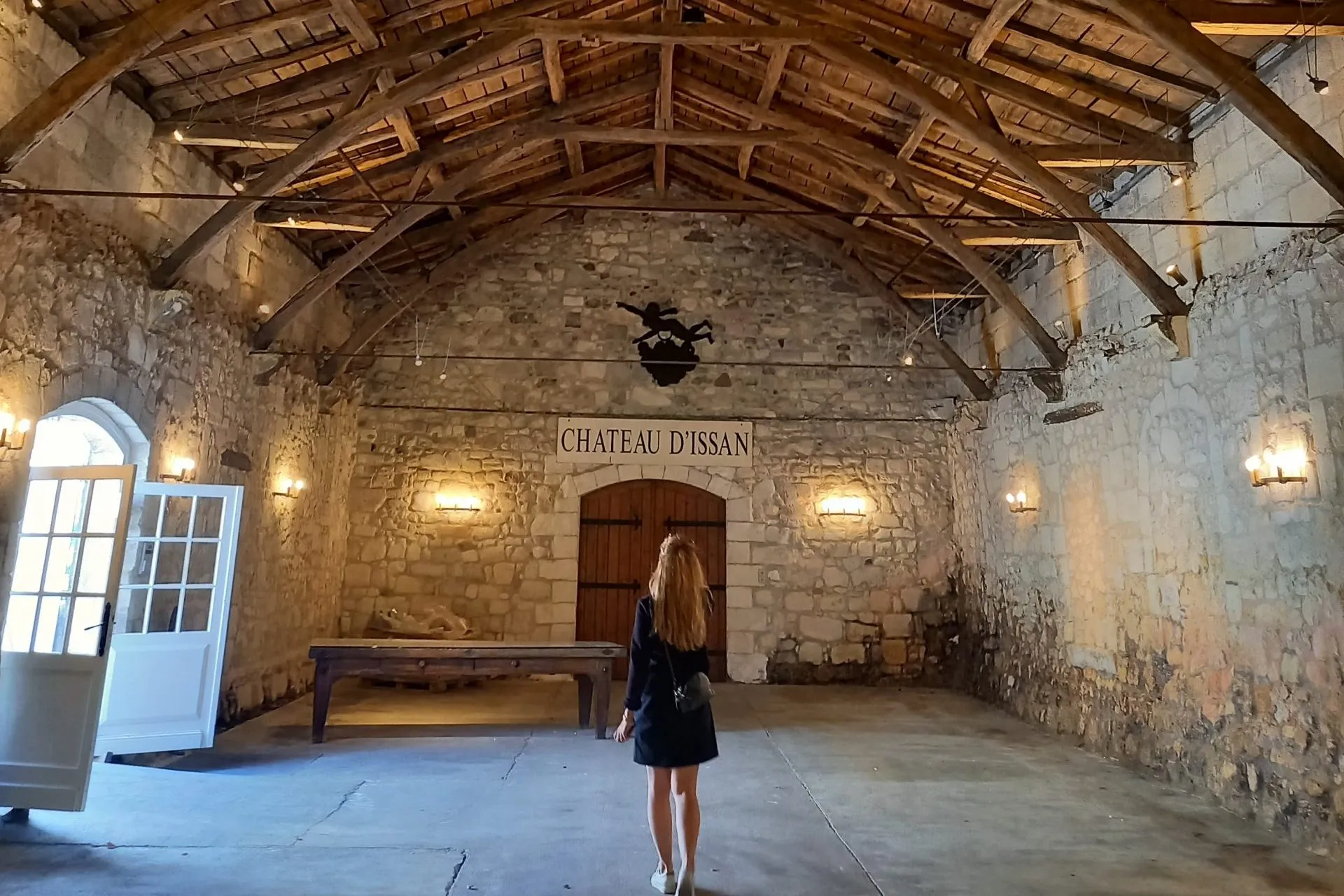
Is Medoc Worth Visiting?
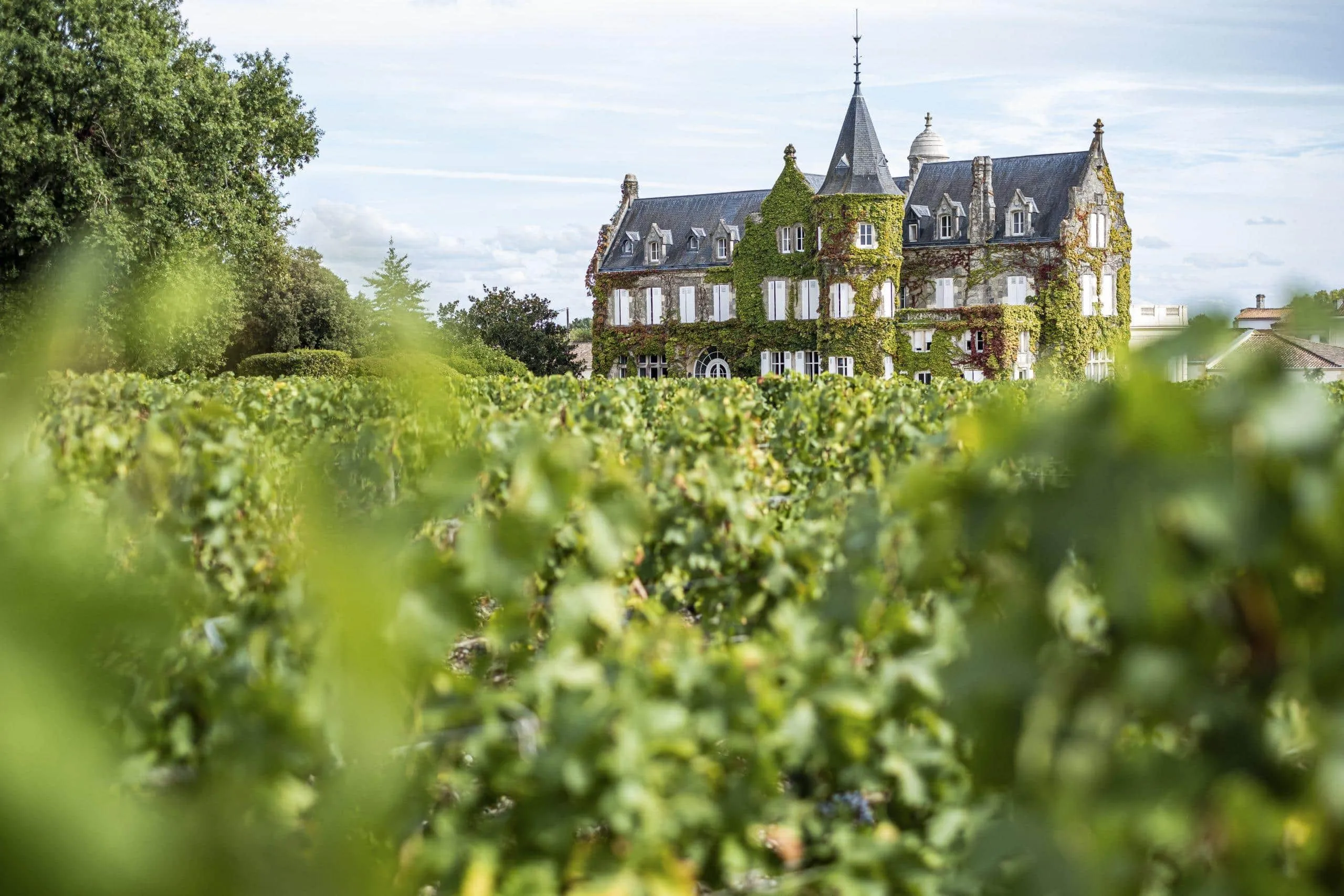
The Best Medoc Wineries to Visit in 2024
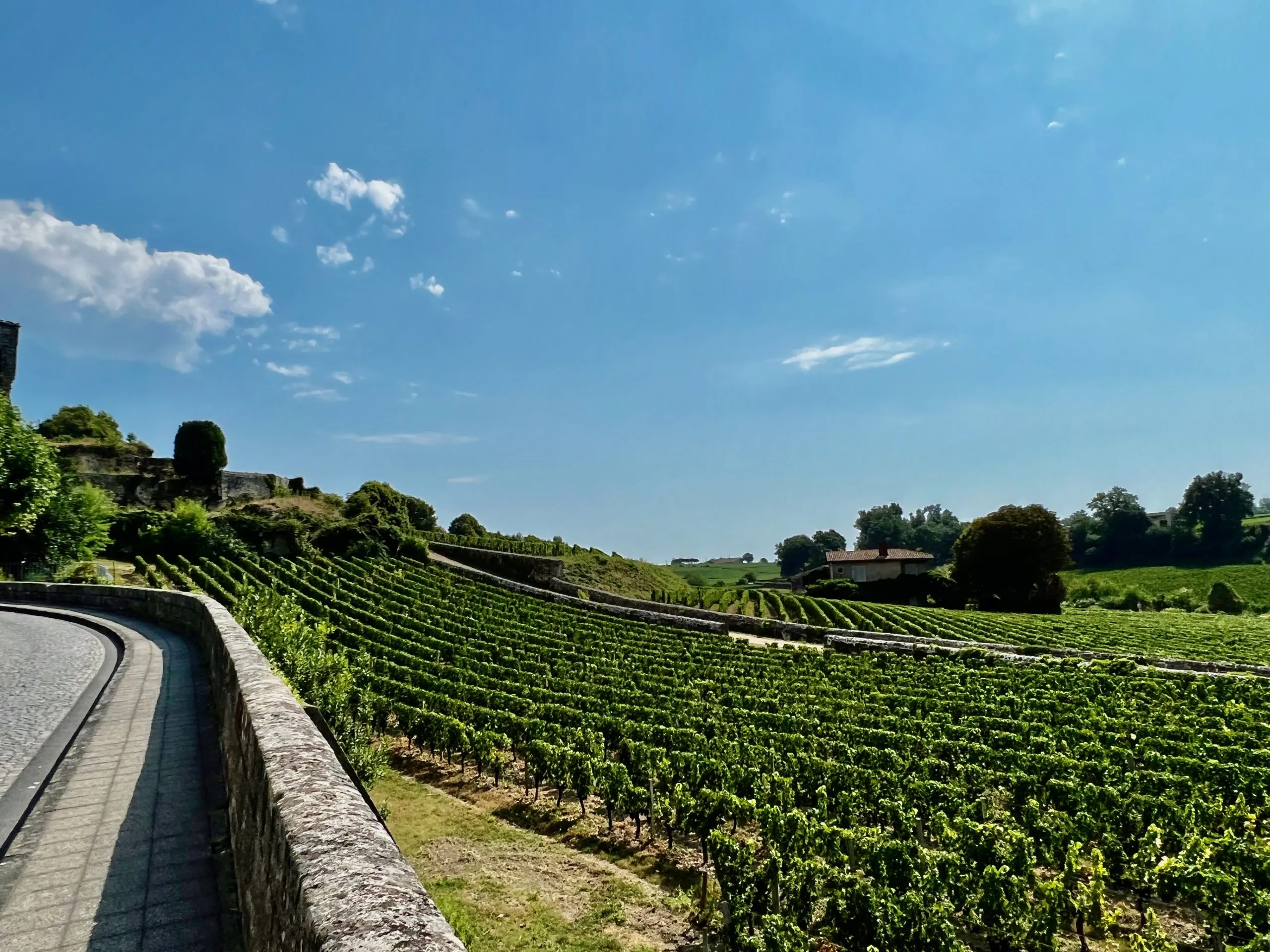
Do You Need a Car in Saint-Emilion, France?

Is There Uber in Bordeaux, France?

Bordeaux Wineries Open to Public in 2024
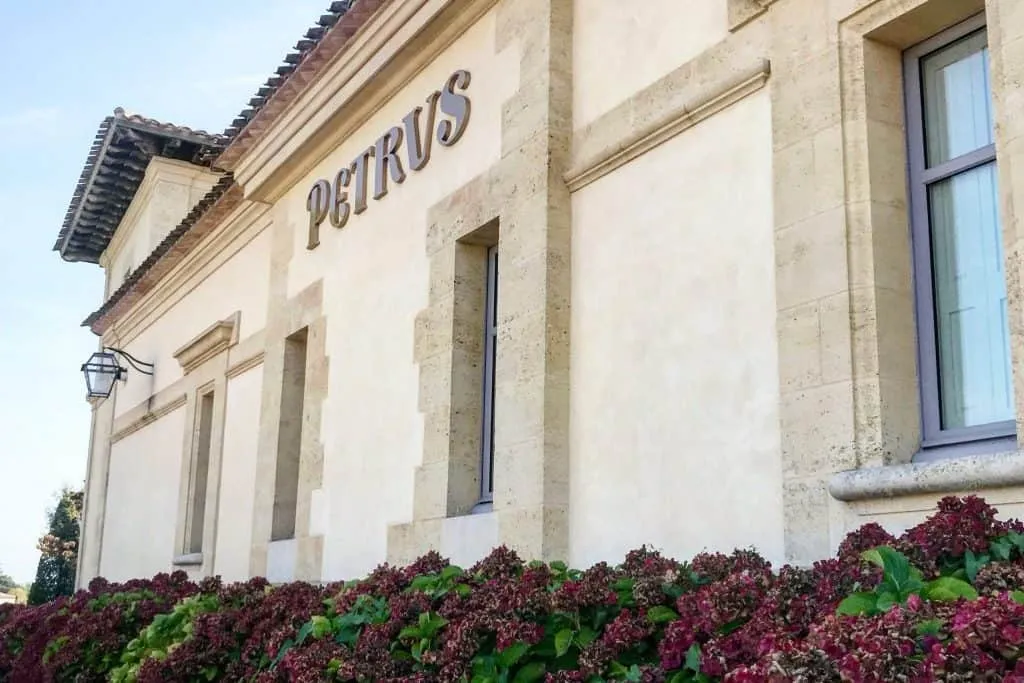
Can I Visit Chateau Petrus?
I may receive affiliate compensation for some of the links below at no cost to you. You can read the affiliate disclosure in privacy policy . Thank you!
Recommended Hotels in Bordeaux
Villas Foch
Hotel de Seze
Intercontinental Le Grand Hotel
Recommended Hotels Near Saint-Emilion
Chateau Croix de Labrie
Le Logis de Valandraud
Chateau Prieure Marquet
Chateau de Ferrand

Social Media
Book your bordeaux wine tour, before you go.
Personalized travel insurance is always good to have.
Get up to 30% off your car rental in Europe with Rentalcars.com .
If you are looking for a driver or a private transfer in Bordeaux see some options here .
Where to Stay in Bordeaux?
Here are some suggestions of the best stays in Saint-Emilion, Medoc and Bordeaux.
Bordeaux Neighbourhoods
Where to Stay in Bordeaux Wine Country – the Right Bank?
Where to Stay in the Medoc?
Where to Stay in Bordeaux city center?
The Best Boutique Hotels and B&Bs in Bordeaux
The Best Luxury Hotels in Bordeaux wine country
Bordeaux city stays
Saint-emilion/right bank stays, medoc/left bank stays.
See more tips on visiting Bordeaux wine country in my Blog .
If you are interested in a private wine tour of Saint-Emilion or Medoc wineries, see our tours at Atlas Bordeaux .
Enjoy your time in Bordeaux!
Related Posts

Is Bordeaux City Pass A Good Value?
Like any major touristic city, Bordeaux has introduced a city pass officially called Bordeaux Metropole City Pass. In this article, let’s review what is included

List of the Medoc Wineries in the 1855 Bordeaux Classification
Top Bordeaux chateaux in the Medoc wine country

Best Bordeaux Wine Country Restaurants with a Map
I am often asked for recommendations of nice vineyard restaurants in Bordeaux
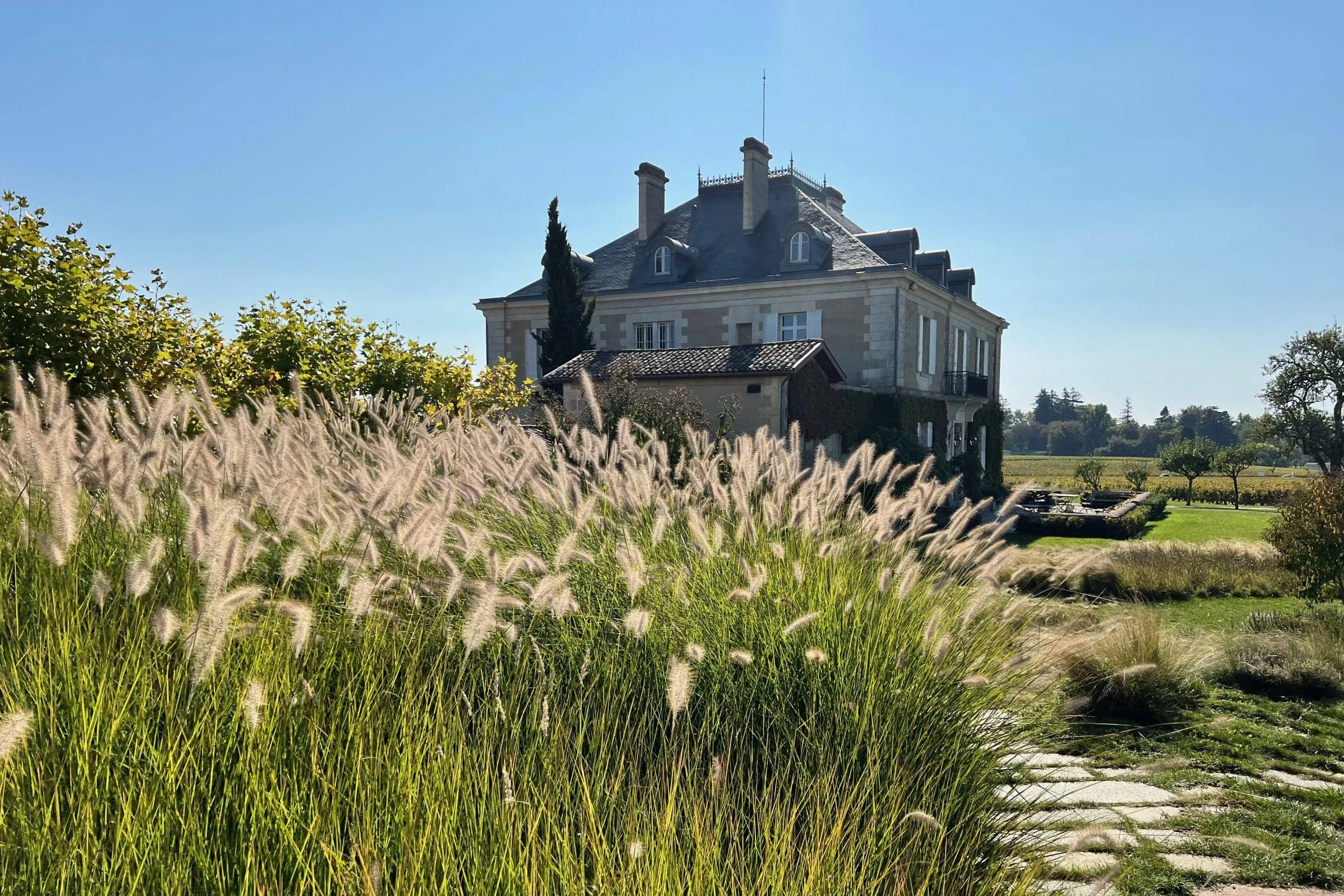
Visiting Bordeaux in September?
September is one of the best months to visit Bordeaux. Here are some ideas on things to do in Bordeaux in September.
Book Your Bordeaux Wine Tour
All wine tours.
Please confirm that you are over legal drinking age in your country of residence

IMAGES
VIDEO
COMMENTS
It takes about 40 minutes to reach Pomerol by car from Bordeaux and only about 10 minutes from the village of Saint-Emilion. The 11.5-hectare (28.4 acres) vineyard of Petrus is situated at the highest elevation of the Pomerol plateau on iron-rich clay . The unique blue clay subsoils of Petrus are what make the wines of Petrus so special.
Petrus. From sales to saints, terroir to tattoos: a wine-lover's guide to Pétrus. No. 1. No château, no second wine and sometimes no Pétrus: Visitors to Bordeaux often ask to see the Pétrus château, but they won't find it. There was once a farmhouse on the estate, but that was destroyed about 10 years ago.
The main building of Domaine de Pétrus Close up of wooden wine crate used to ship bottles of Pétrus A bottle of Pétrus 1982. Pétrus is a Bordeaux, France, wine estate located in the Pomerol appellation near its eastern border to Saint-Émilion.A small estate of just 11.4 hectares (28 acres), it produces a red wine entirely from Merlot grapes (since the end of 2010), and produces no second ...
The 28.5 acre vineyard of Petrus is situated at the top of the highest elevation on the Pomerol plateau and is planted to 100% Merlot grapes. The blue clay subsoils of Petrus are what make the wines so special. Petrus is distinctive as its entire vineyard is right on top of the clay, while neighboring vineyards only have a portion of blue clay ...
It is a complex wine, a real powerhouse with an insane amount of fruit. The quality of Pétrus is the result of a million little things, that make Pétrus the wine it is. Of course, we cannot go into every detail here, but one point that is certainly important is the location of the vineyards. The 11 hectares of vineyards are located at the ...
The myth surrounding the Pétrus vineyard is firstly due to its unique terroir The 11.5-hectare vineyard of Petrus is situated on the top of the highest elevation on the Pomerol plateau and is planted to 100% Merlot grapes. The location of Petrus allows for natural drainage of the vineyard, which is especially important due to the high percentage of iron-rich clay in the soil.
Petrus is usually approachable after a decade or so in bottle, but the wines from the very greatest years will continue improving for many more years. Growing Conditions. The 11.4 hectare vineyard is located on a plateau on the highest part of Pomerol in the far east of the appellation. The topsoil and the subsoil at Pétrus is almost all clay ...
Chateau Petrus became "Chateau Petrus" when Jacques Meyraud bought the vineyard and set about making it one of the best in Bordeaux. From 1770 Chateau Petrus was owned and operated for over 100 years by Antoine Arnaud, who laid the foundations for the wine's stellar reputation it enjoys today. By 1850, despite the Revolution and, latterly ...
This guide will help you find the most legendary Château Pétrus wines for your collection. The Best Vintages of Pétrus for Aging Pétrus makes some of the most expensive Bordeaux wines, and it's easy to see why. The estate is located in Pomerol, one of the region's most reputable areas, and has old Merlot vines planted in top-quality ...
Visiting Chateau Petrus. If you're a wine lover and want to experience the magic of Chateau Petrus firsthand, a visit to the estate is highly recommended. Not only can you explore the beautiful vineyards and witness the winemaking process, but you may also have the opportunity to taste some of their exquisite wines.
The most expensive bottle in the world, Petrus 2000, Cuvée de l'espace, is estimated to be worth $1 million or 830,000 euros. Chateau Petrus is undeniably one of the best red wines in the world and will continue to be a sought-after investment for years to come. Thomas Ashford. Thomas Ashford is a highly educated brewer with years of ...
It's only a few short steps to get into the middle of Pétrus' modest 12 hectares of vines. And from there what you see is Pomerol fanning out around you. "It's a bump," said Moueix. "A gentle bump, but a bump, here at Pétrus. We are very proud of our 40 meters of elevation," he added dryly. "Below the bump, just a few meters lower, is the ...
The Best Wineries (and More) to Visit in Mendoza, Argentina . Images Courtesy of Finding Wine, The Vine King, Verve Wine, Wine Country Connection. The Best Montepulciano d'Abruzzo Wines to Drink Right Now . Image Courtesy of Oregon Wine Board / Photography by Neil Ferguson ... When you buy something through our link, we may earn a small ...
Usually you can visit 3 Chateaus per day. 3) First rule : more the winery is famous, more it is difficult to visit. Forget about the first growth as Cheval Blanc, Yquem, Margaux, Lafite & Latour, Petrus, they do not use to welcome visitors. 4) Second rule : Earlier is always the better. Some visits are small group tour, some are private.
In Pessac Leognan, Pape Clement, Smith Haut Lafitte and lArrivet Haut Brion are open for weekend visits. Lynch Bages and Pontet Canet in Pauillac take visitors most weekends. And if you are in the Haut Medoc, Lanessan and dAgassac are open. La-Tour-de-By in the northern part of the Medoc is also open.. In St. Emilion, Chateau Fonplegade is open 7 days a week and Chateau de Pressac is open ...
At a Paris tasting of 23 vintages in 1987, the 1945 came in 17th, although Edmund Penning-Rowsell rated it more highly. In 2002, a group of Barclays bankers made the headlines for spending £44,000 on wine at London's Pétrus restaurant, including £11,600 on a bottle of the 1945 vintage; it is not known how they rated it.
However, there are select few excellent Pomerol wineries that gladly accept visitors. Consider them when planning your Bordeaux wine tour. 1. Chateau Beauregard. Chateau Beauregard in Pomerol is open for public and conducts visits and tastings Monday through Friday and select Saturdays by appointment. It is a beautiful historic estate with a ...
While some Bordeaux first growths are possible to visit, you have to time your visit carefully. Unfortunately, last-minute requests will not be honored. Some first-growth wineries are closed during harvest (August to October). First-growth wineries are typically closed on weekends except for Chateau D'Yquem which is open 7 days a week.
The Petrus estate went as far as aging their extraordinary 2020 vintage wine in space. In 2021, Christie's released this space wine at a private auction for $1M. Let's explore Chateau Petrus in detail - the flavor profile of the wine, best vintages to buy, the estate's vineyards, and winemaking practices. We'll also look at why a bottle ...
By far the largest, the most important, and one of the best French wine regions, both for high-end wines and for bargains, is Bordeaux. Great reds from the renowned chateaus are what make the headlines, but Bordeaux is so big, that there is plenty of choice.
2011. France · Pomerol · Château Pétrus · Red wine · Blend. 4.6. 648 ratings. Add to Wishlist. $6,824.99. Price is per bottle. The 2011 vintage is not available for purchase right now. But we have this 2014 vintage instead.
As you can see, most of the terroir is gravel with clay soils. Located on the famous plateau of Pomerol, at its peak, the vineyard rises to 38 meters. Even though the original vineyard is located just across a small dirt road from Petrus, and only a single vine away from Chateau Lafleur, the terroir of Chateau La Fleur Petrus is quite different ...
The 39-hectare estate of Cheval Blanc is divided into forty-five distinct parcels. A view on Chateau L'Evangile in Pomerol from the tasting room of Chateau Cheval Blanc. The estate uses the original combination of grape varieties: 52% Cabernet Franc, 43% Merlot, and 5% Cabernet Sauvignon. A larger proportion of Cabernet Franc is unusual for ...